The early Thirties were a period in which it was possible to obtain incredible results in the field of mechanics with few economic resources, a generous dose of passion and sharp talent. In Italy, long before other countries, there was a flowering of small original car builders.
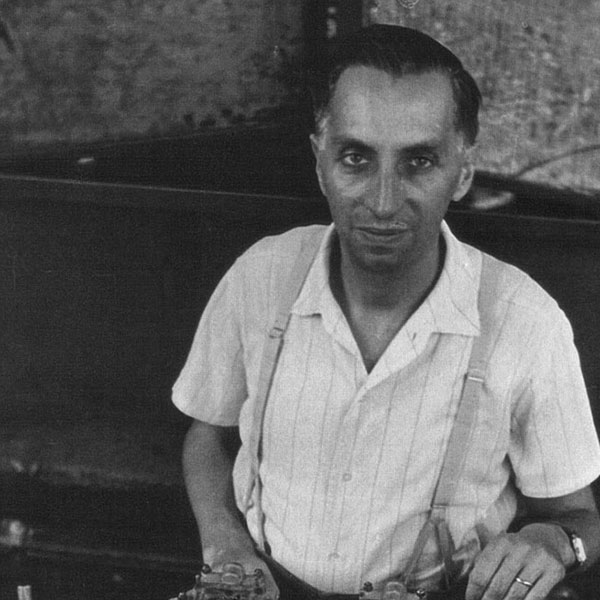
Vittorio Stanguellini from Modena was surely one of the greatest and most volcanic of these. After starting out tuning and modifying car engines, he became a car manufacturer in his own right.
In Modena everyone's an expert in motor cars and motorcycles! The Motor Valley intersects the Via Emilia. Here we are in the land of tortellini, motorcars and beautiful girls.
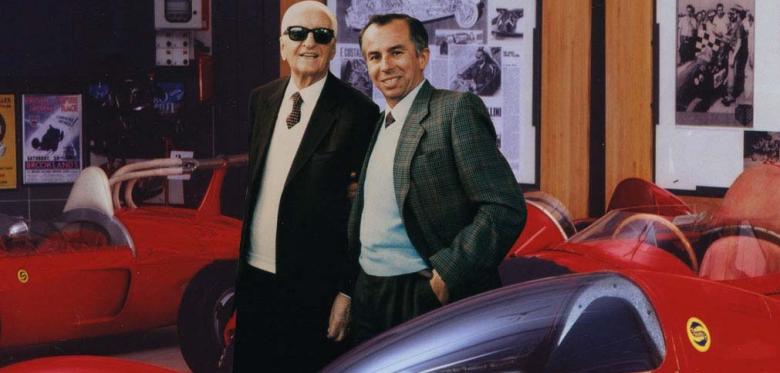
During what were the heroic years in car building, the greatest names in motoring all lived around here: Stanguellini and Ferrari were friends and often swapped ideas and advice. They were a group, who would spend evenings together in the trattoria… Good ideas came out at the table, over a bottle of Lambrusco and some salami.
Guido Piovene, an Italian writer and journalist, wrote about the city of Modena and the genius of Stanguellini in his 1957 book “Viaggio in Italia”. In that book, he also wrote about meeting Enzo Ferrari, who told him that “cars are like people, each car has a soul and making cars to me is like taking cocaine.”
Analyzing the history of Vittorio Stanguellini, the pioneer of the Motor Valley, it seems to have the history of Ferrari on hand, there are many similarities. Same momentum, same temerity, same taste, same land as those who had engines in their blood. Vittorio had started even before Enzo Ferrari, third after the Maserati brothers but first in life. Although with low displacements but with great powers, he was in fact the first preparer and then manufacturer of racing cars in Modena, the heart of the Motor Valley. A fairy tale that later became history. “My father led the way, even if he only produced cars with small engines. He was followed by Ferrari and the Maserati brothers,” Francesco, the son of Vittorio, said. An era of geniality, not only in the builders but also in the mechanics, who had the hands of artists. The equipment, the pliers, the pincers were handmade, they were not bought in the shops. In the Stanguellini household even the toys are home-made. “I have always breathed in the smell of petrol and I grew up surrounded by cars,” Francesco continued. Vittorio Stanguellini was self-taught because no one was an engineer back then. Not even the genius Enzo Ferrari, who only later was awarded an honorary degree in engineering. There’s only passion. There’s the passion of Arturo, a lifelong chief mechanic who polishes everything. The passion of Valentino who prepares the engines. The passion of Giorgio who rebuilds parts on the lathe. People with the love of cars in their veins, who live only for this. The engineers at that time were brilliantly replaced by passionate craftsmen, who tested the aerodynamic efficiency of the cars by attaching to them a woolen thread that they were moving with a hair dryer.
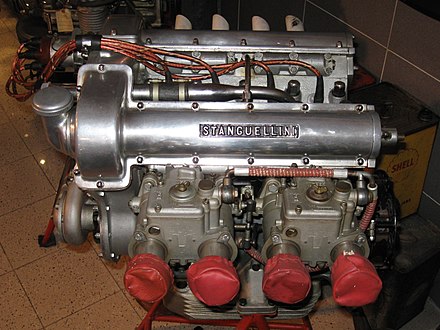
Taking into account the powers obtained from the displacements of the time that led the cars to exceed 300 kilometers an hour, today's F1 cars with today's technology, lightness, electronics should reach 600 km per hour. And you get even more the feeling of how great Italy was at that time to express personalities like these in a continuous stream. They seem very distant years.
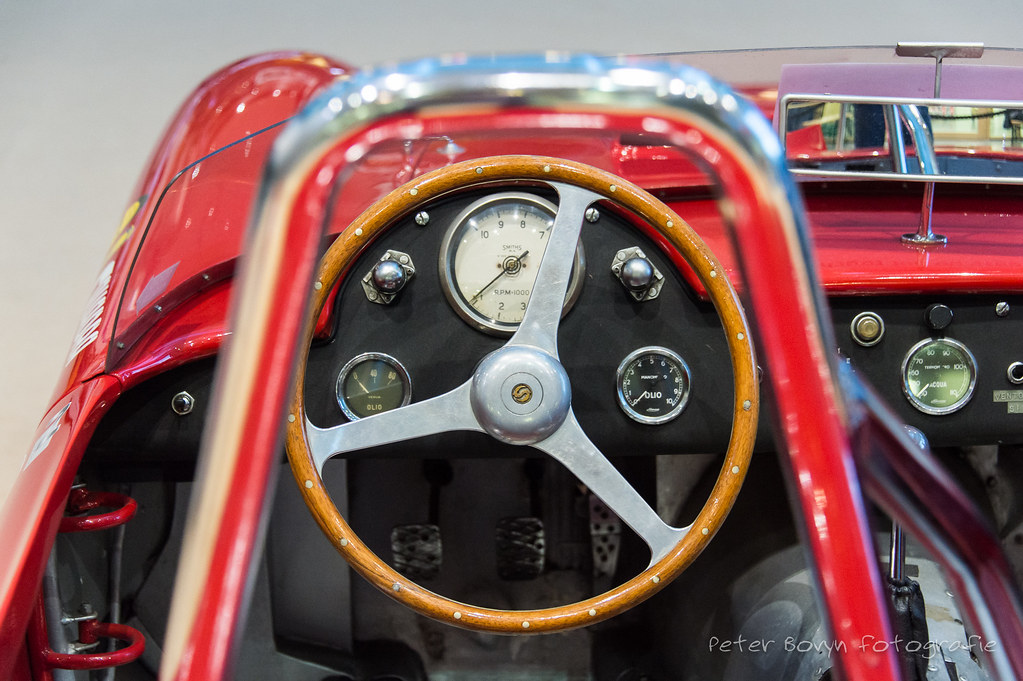
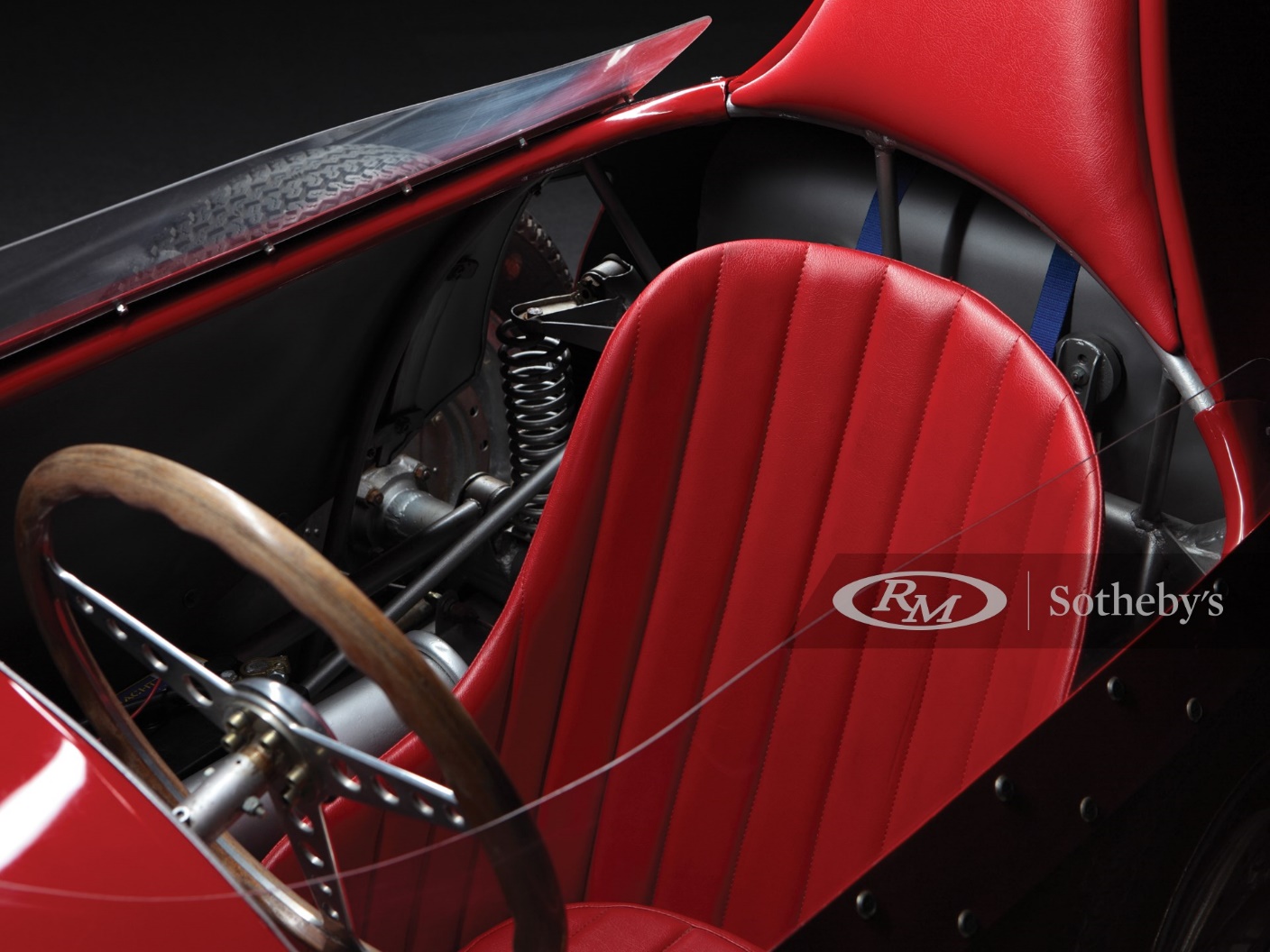
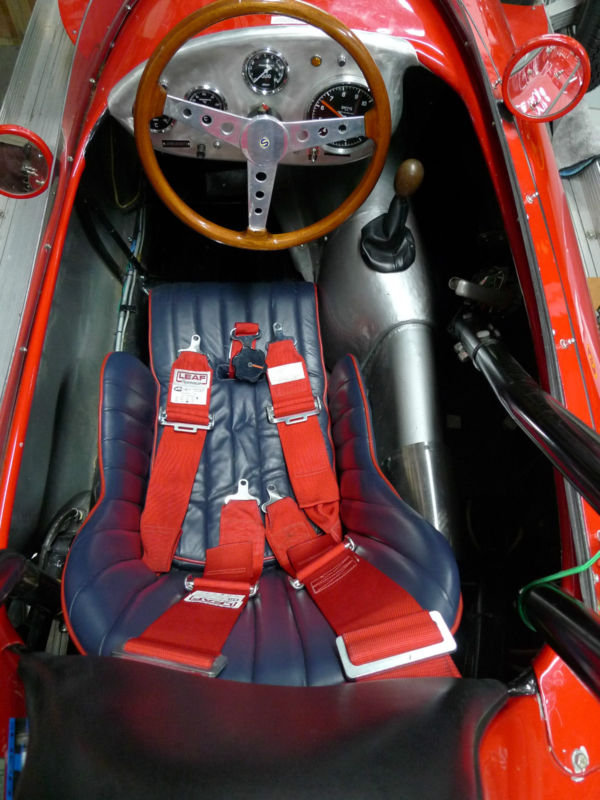
Stanguellini’s cars cut like a razor and are beautiful, very beautiful. It is the beauty of the design which is so striking. The line is aerodynamic: sideways on, the cars look like droplets of water. The outline of an aircraft’s wing.
"Guys, keep in mind that the image is in first place," Vittorio Stanguellini was saying to his employees.
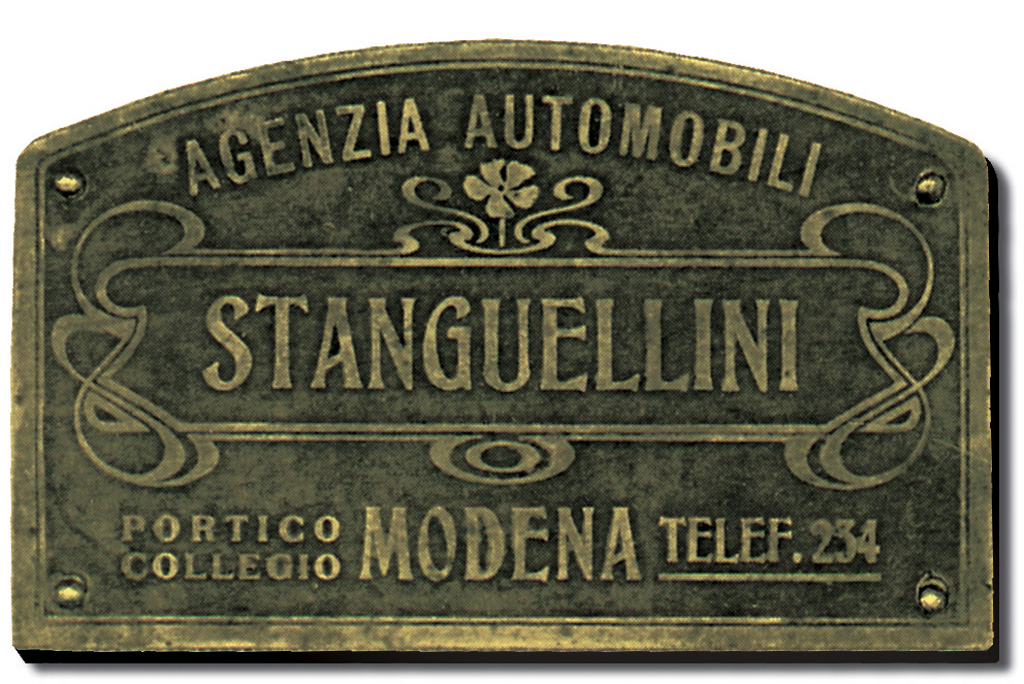
Automobili Stanguellini is an Italian maker of small sports cars, based in Modena and founded by Vittorio Stanguellini.
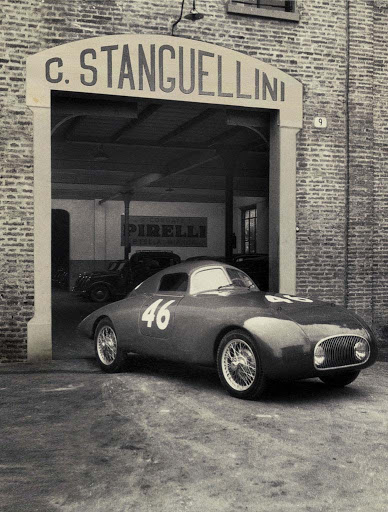
It was most active between 1946 and 1960. They continued to produce competition cars until 1981, when Vittorio Stanguellini died; thenceforth, the company devoted to vintage cars.
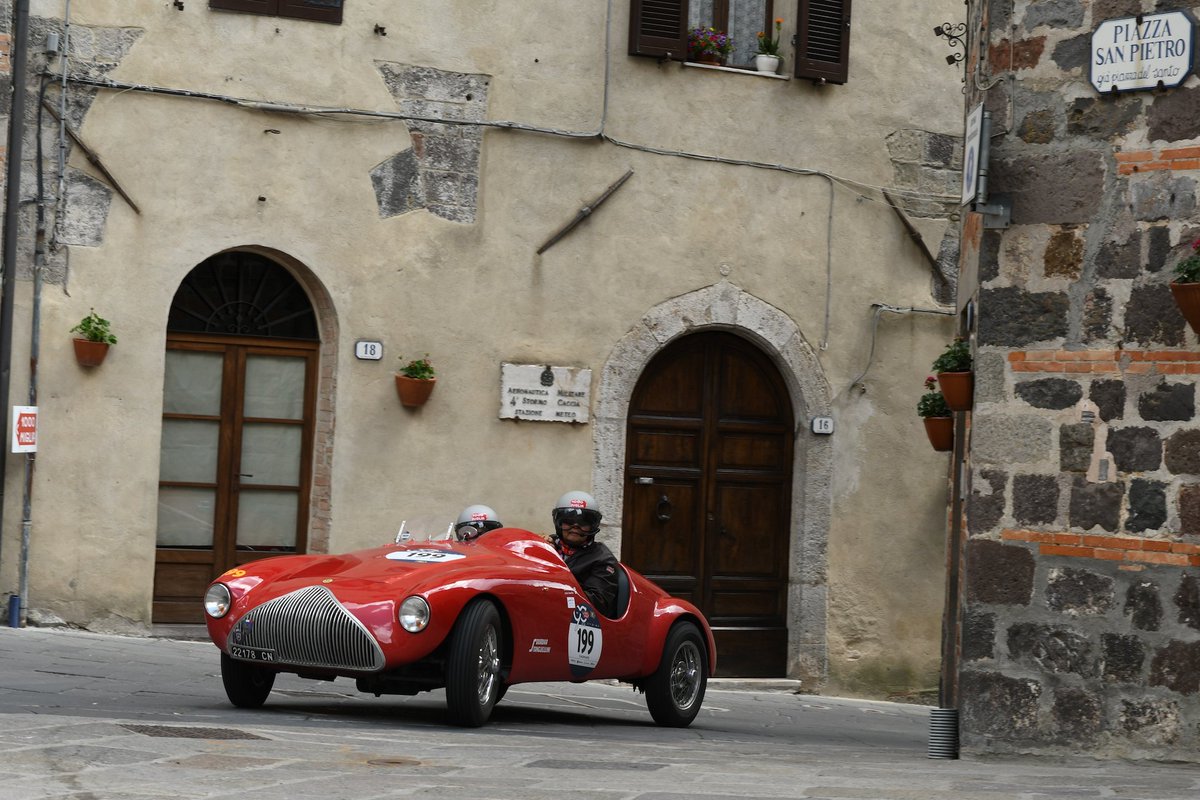
Vittorio Stanguellini began tuning and modifying Maserati, Alfa Romeo and Fiat cars for racing.
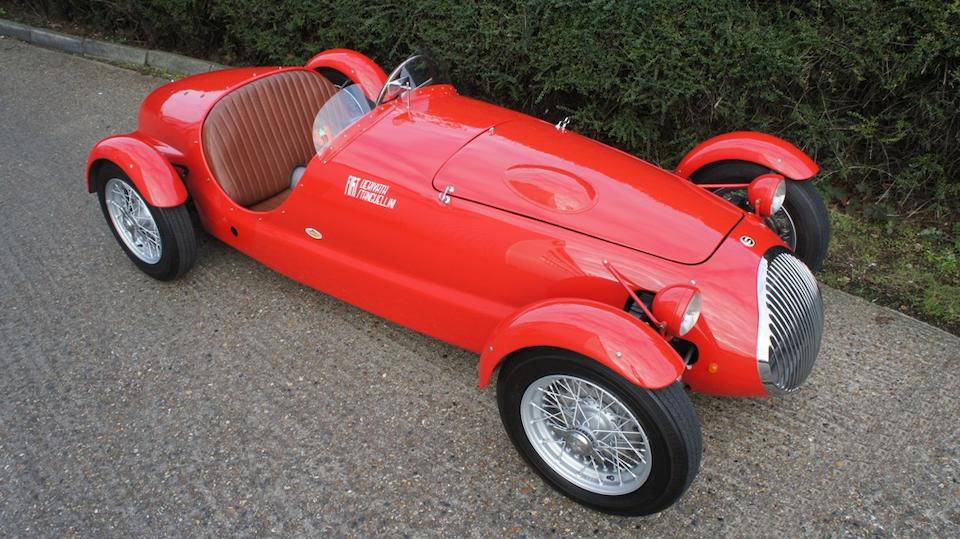
He was a friendly rival of Enzo Ferrari in Modena beginning in the late 1920s.
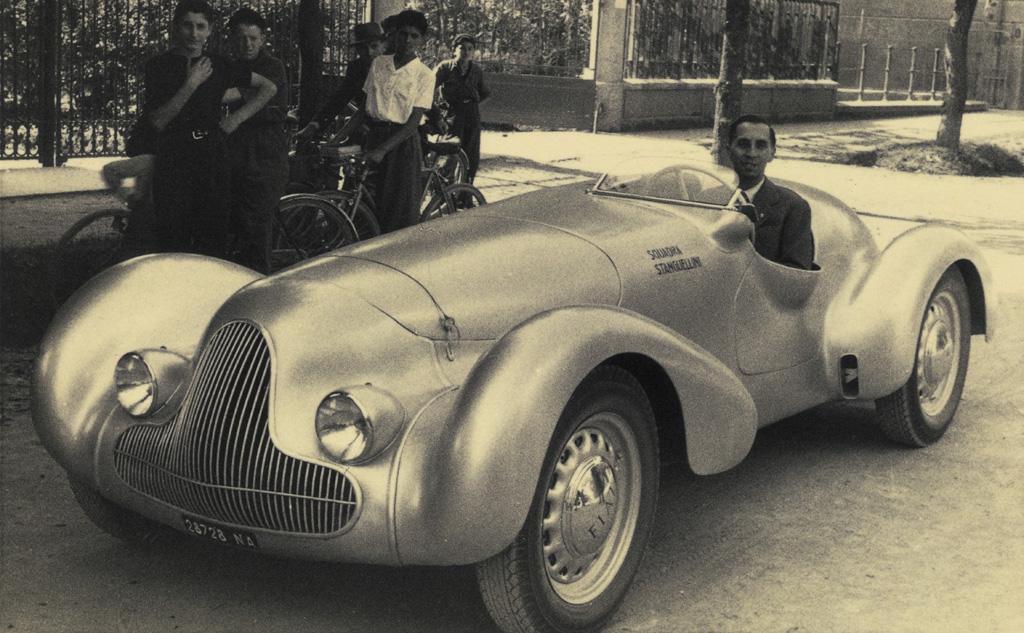
Fiat 2800 National Sports Category, 1939.
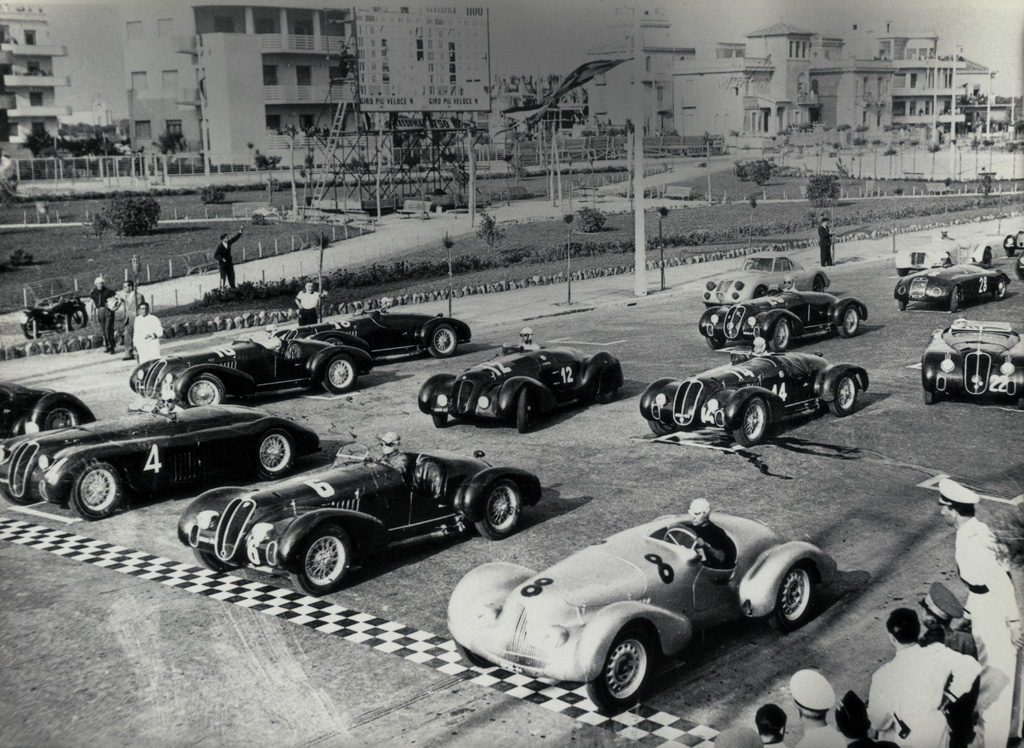
Fiat Stanguellini 2800, Circuit of the Empire, 1939.
Vittorio then formed Squadra Corse Stanguellini in 1938 and quickly found success when he modified a Maserati 6CM which took the overall victory at the 1938 Targa Florio.
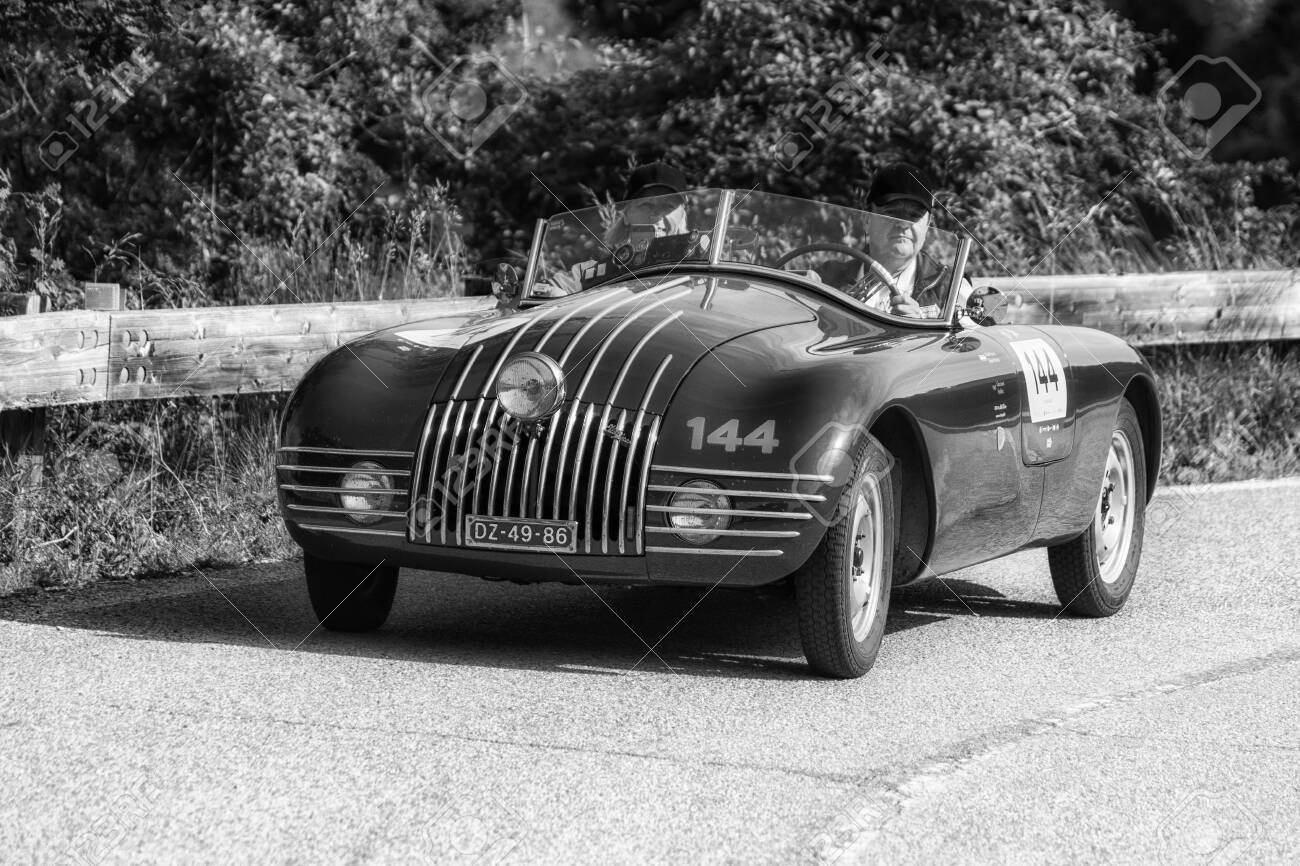
Colle San Bartolo, Pesaro, 05/17/2018, Stanguellini 1100-haltop-golden-1947.
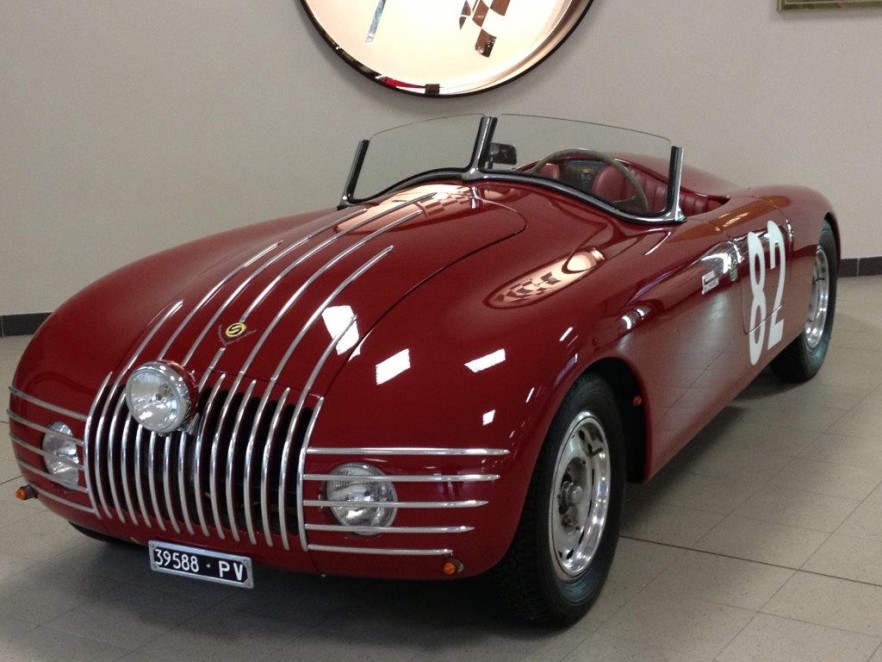
Stanguellini's cars competed in countless sports car racing events, minor and major (such as the 1957 24 Hours of Le Mans) alike. Vittorio Stanguellini used his experience tuning Fiats in the pre-war days and, having raced them under the “Squadra Stanguellini” flag, he based his small racers on Fiat components. Focusing on the 750 & 1100 cc classes (winning numerous national victories), Stanguellini sports cars were beautifully engineered cars with light-alloy cylinder blocks, twin overhead camshafts (bialbero) and dual side-draught Weber carburettors. This would add up to a claimed 60 bhp (40 kW) at 7500 rpm from the 741 cc sports engine and 90 bhp (70 kW) at 7000 rpm from the larger engine, providing top speeds of around 180 km/h and 190 km/h respectively.
Unlike many others of the so-called "Etceterinis", Stanguellini were loath to use foreign parts, instead relying on Fiat as much as possible. Bodywork was usually by local Carrozzeria Reggiano.
Vittorio Stanguellini tried very hard to gain a win at the 24 Hours of Le Mans. However, with his limited resources, he never was able to achieve this. His best finish was a fourth in class.
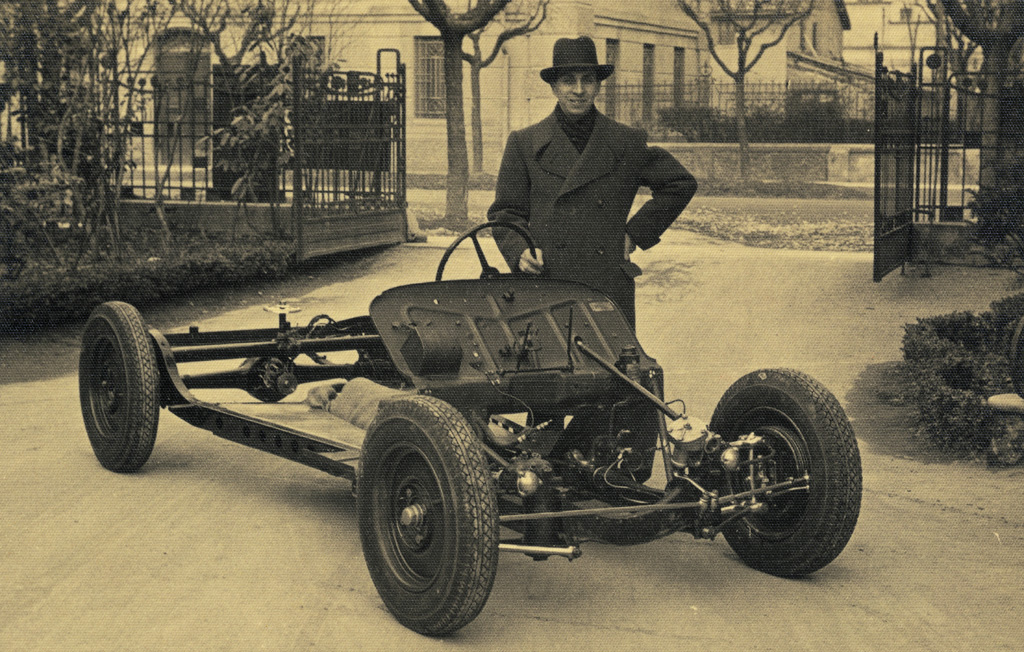
Vittorio Stanguellini had been making special aluminum twin-cam cylinder heads for the Fiat 1100 block since 1947.
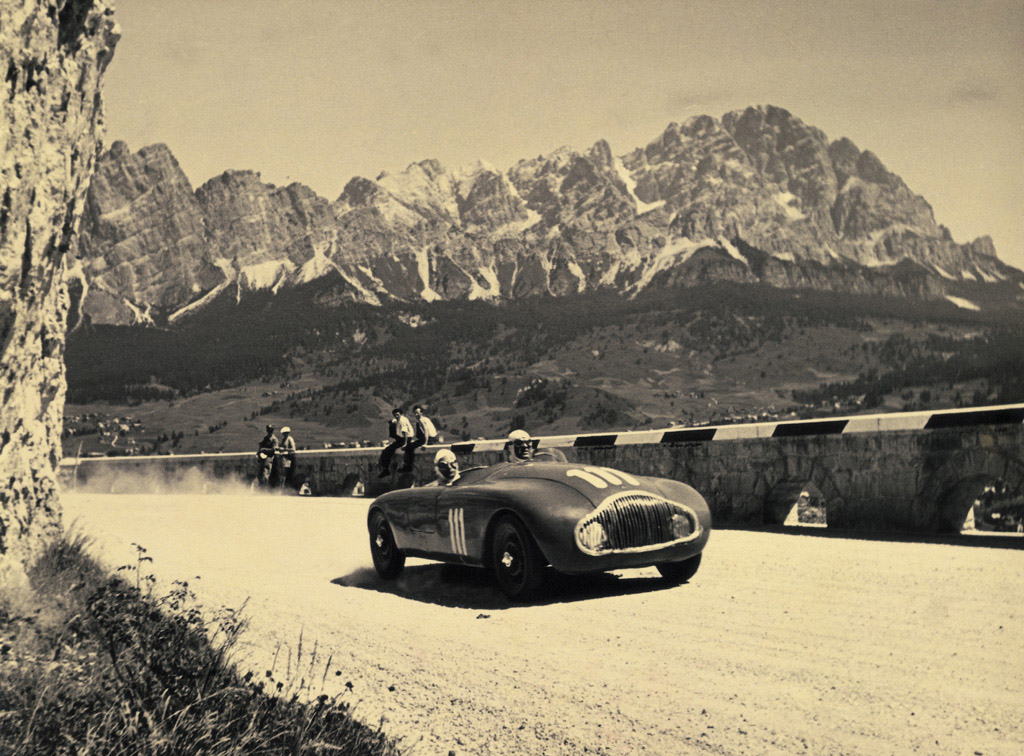
Dolomiti Gold Cup, Sighinolfi in a Stanguellini, 07/16/1950.
However, in 1950 he finished his most ambitious project: a complete 750cc racing engine - designed from a clean sheet of paper by Oberdan Golfieri, an engineer from Romagna, Italy. This was a lightweight 9000 rpm engine based on a specially cast aluminum block and heads. Stanguellini racing cars achieved extraordinary success worldwide with this engine in the 1950s, including numerous national championships in Italy and France. Briggs Cunningham purchased a 750cc twin-cam car which he raced in the United States, along with a Stanguellini Formula Junior.
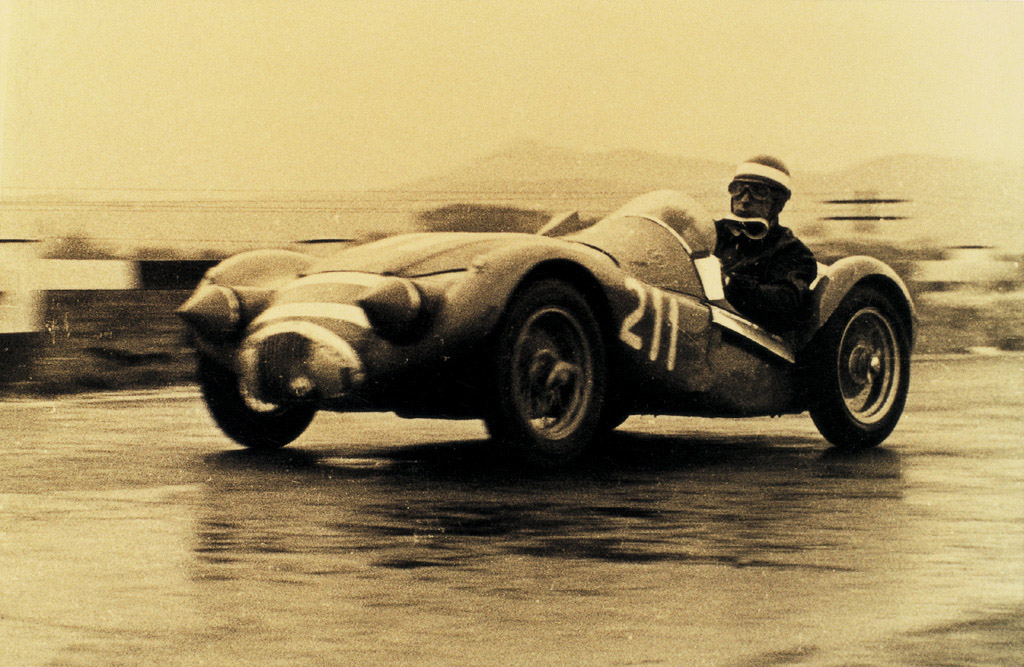
Stanguellini 750 at the Mille-Miglia of 1956.
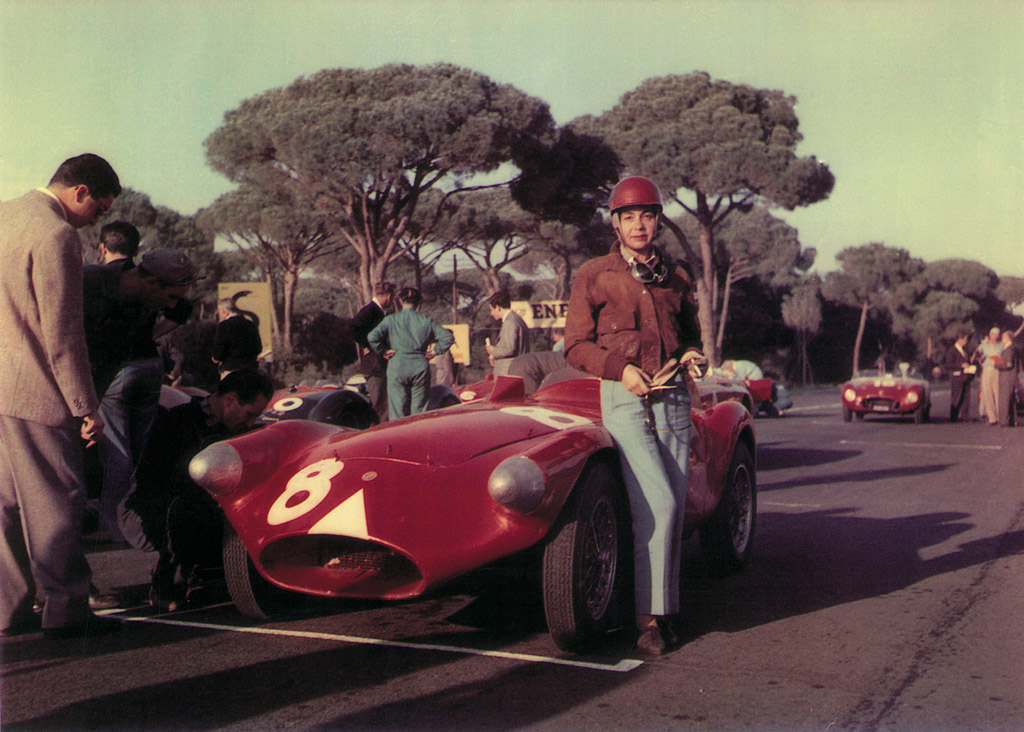
10/21/1956, 6 hours of Castelfusano, Anna Maria Peduzzi.
A Stanguellini won Mille Miglia 750cc class in 1938 and 1940, Mille Miglia 1100cc class in 1940, Targa Florio 750cc class in 1938 and 1952, 12 Hours of Sebring class in 1957, the Vanderbilt Cup in 1960 at the Roosevelt Raceway, New York.
In 1947, a Bertone bodied four-seat berlinetta was offered, using familiar Fiat 1100 parts in a tubular chassis. This was also offered with a 1.500 cc engine. A Fiat 750-based two-seater was offered up the following year.
In 1963, Stanguellini completed a single-seat streamliner called the "Colibrì" (Italian for hummingbird), powered by a 250 cc Moto Guzzi motorcycle racing engine.
Stanguellini single-seaters, "scaled-down lookalikes of the famous Maserati 250F" powered by Fiat 1100 engines, were competitive in Formula Junior, a category under F1 that existed between 1958 and 1963. Stanguellini won the first season of the Italian Formula Junior championship and famous drivers like Bandini and von Trips won their first races in Stanguellinis. Walt Hansgen, driving a Stanguellini, won the FJ race at the inaugural United States GP meeting at Sebring, Florida, on December 12, 1959.
More than 100 Formula Juniors were built by Stanguellini and they were very successful until 1960 and the arrival of British mid-engined racers like the Cooper and Lotus.
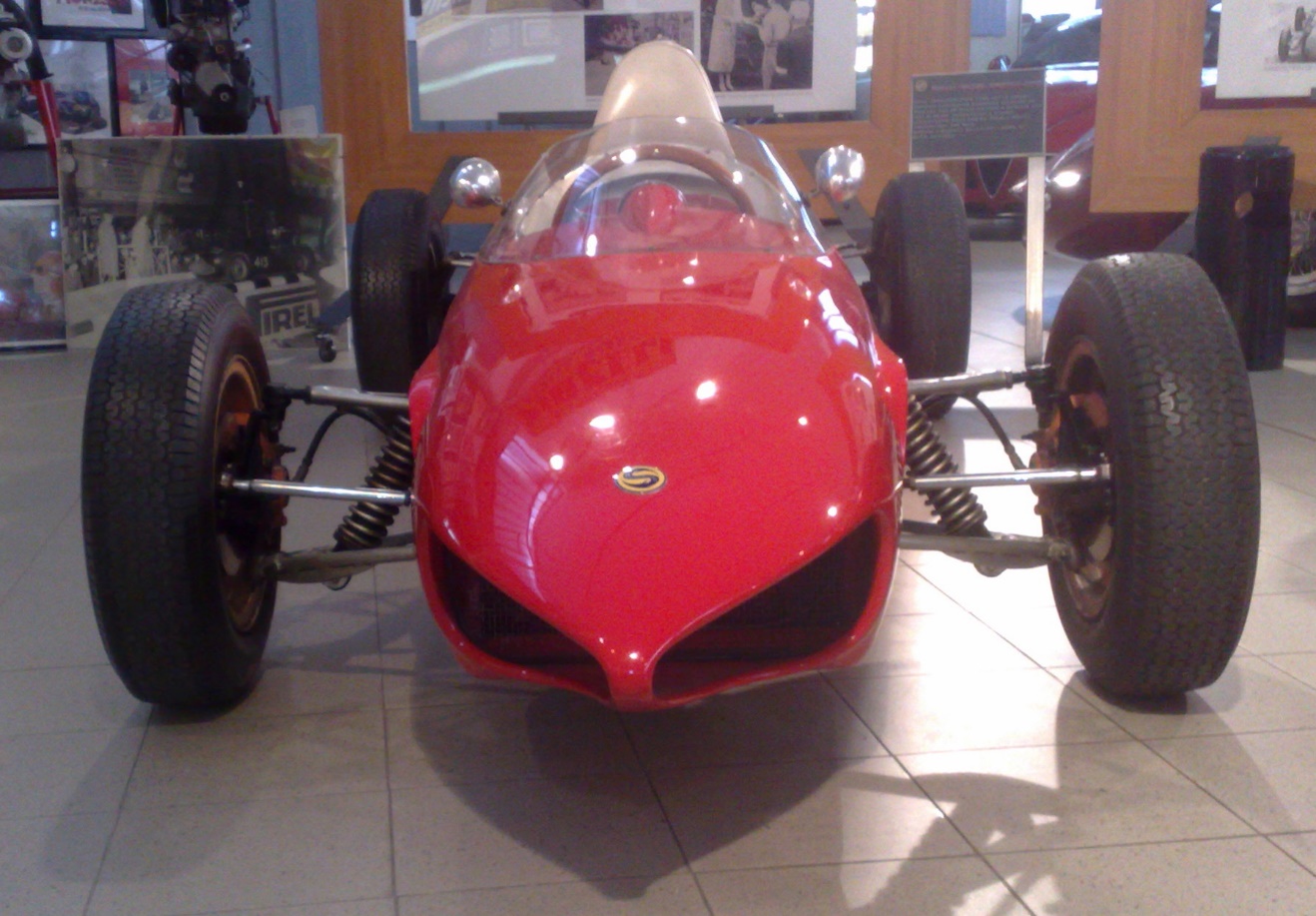
As the days of the Fiat 1100-based front-engined racers were over, Stanguellini did develop a mid-engined car called the Delfino for the 1962 season.
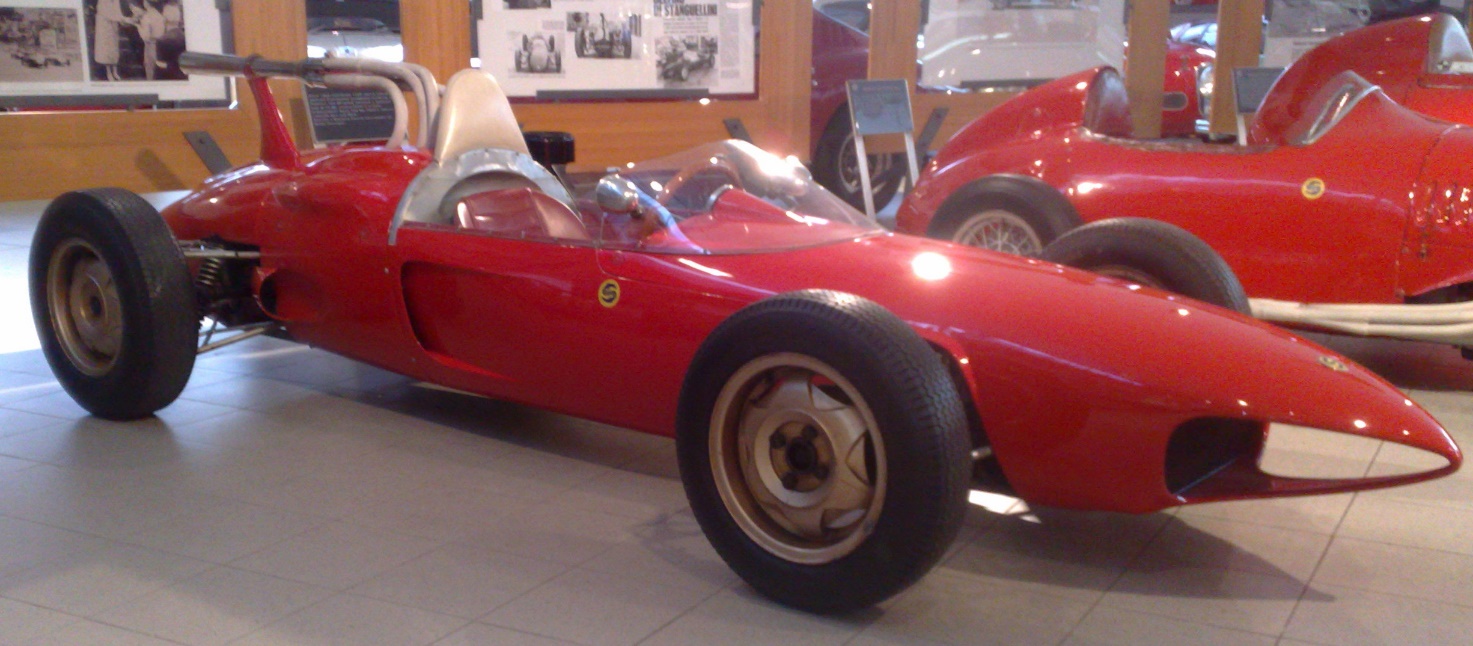
The Fiat 1100 engine, although now tuned to 95 CV (70 kW) at 7500 rpm, was considered the car's weakest link.
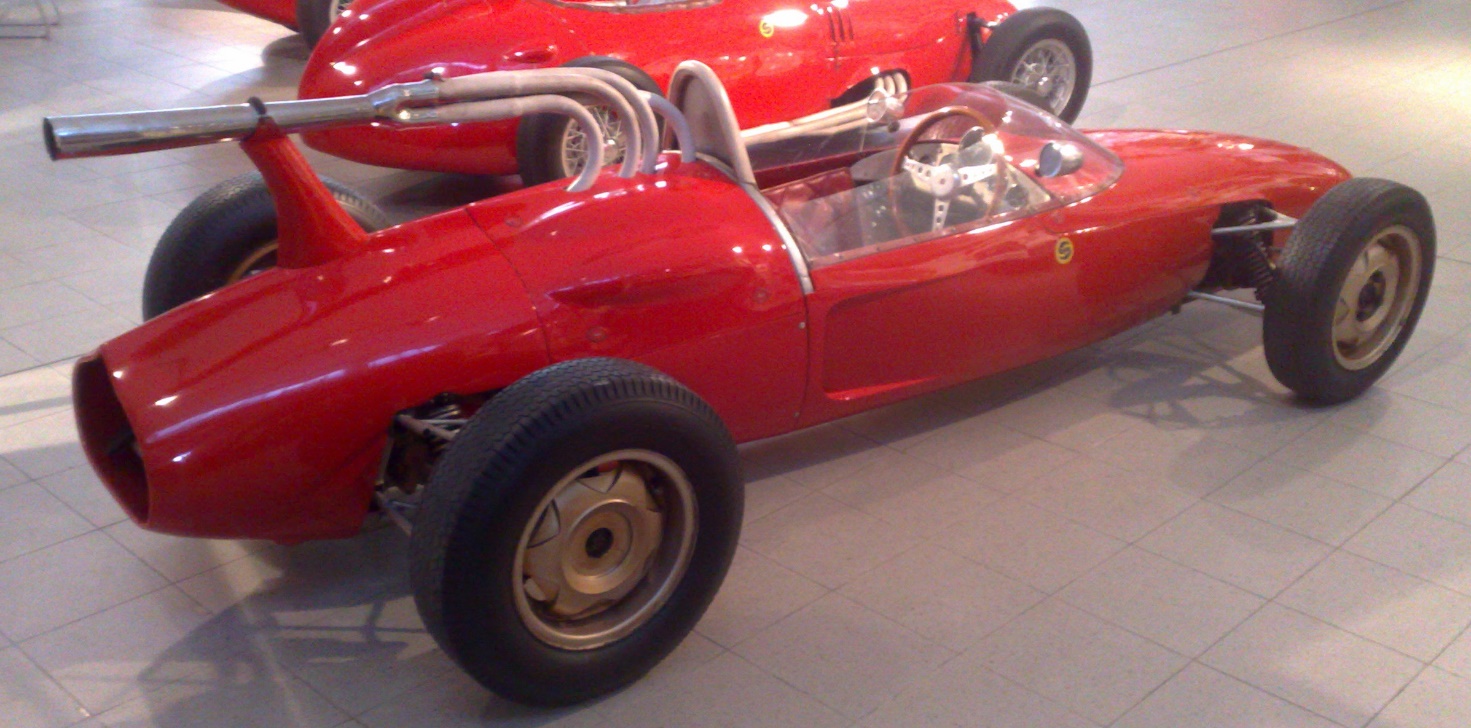
The Delfino debuted at Daytona 1962 in the hands of the Cunningham team's Walt Hansgen and started on pole. It retired with technical problems and the design was never fully competitive again. After 1966, the Stanguellini family concentrated their efforts on tuning equipment and subcontract design, while also running their Modena Fiat dealership.
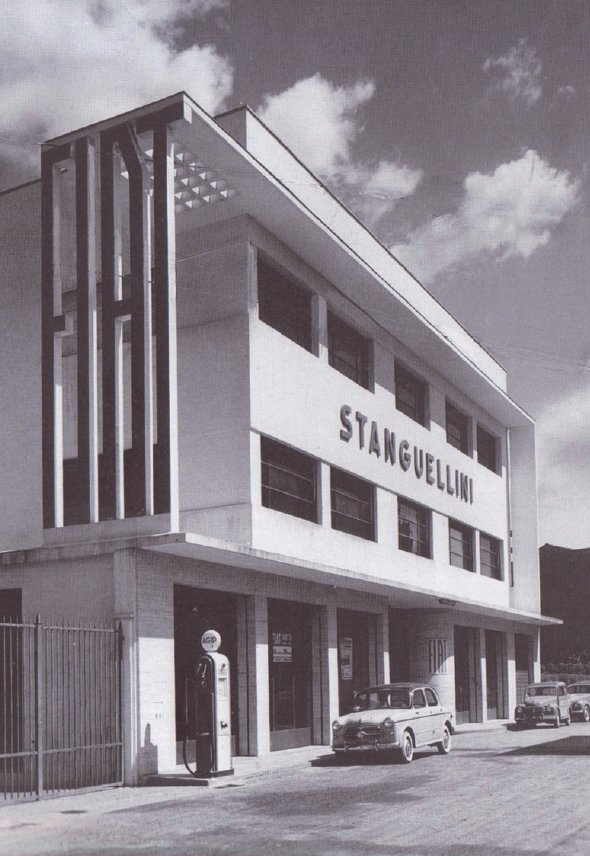
The company headquarters were transferred to this new site as industries were no longer allowed to be based in Modena’s center.
Stanguellini, the manufacturer famous for Formula Junior and for the daring elaborations of Vittorio Stanguellini's technical mind, played for a long time. There is a lot of music along the history of a brand that has brought prestige to the city of Modena and that today lives thanks to a museum that houses its most daring spirit, that of racing cars. Everything, however, was born from percussion. In fact, the story of the Stanguellini family’s company begins further back and albeit not directly with personal transportation.
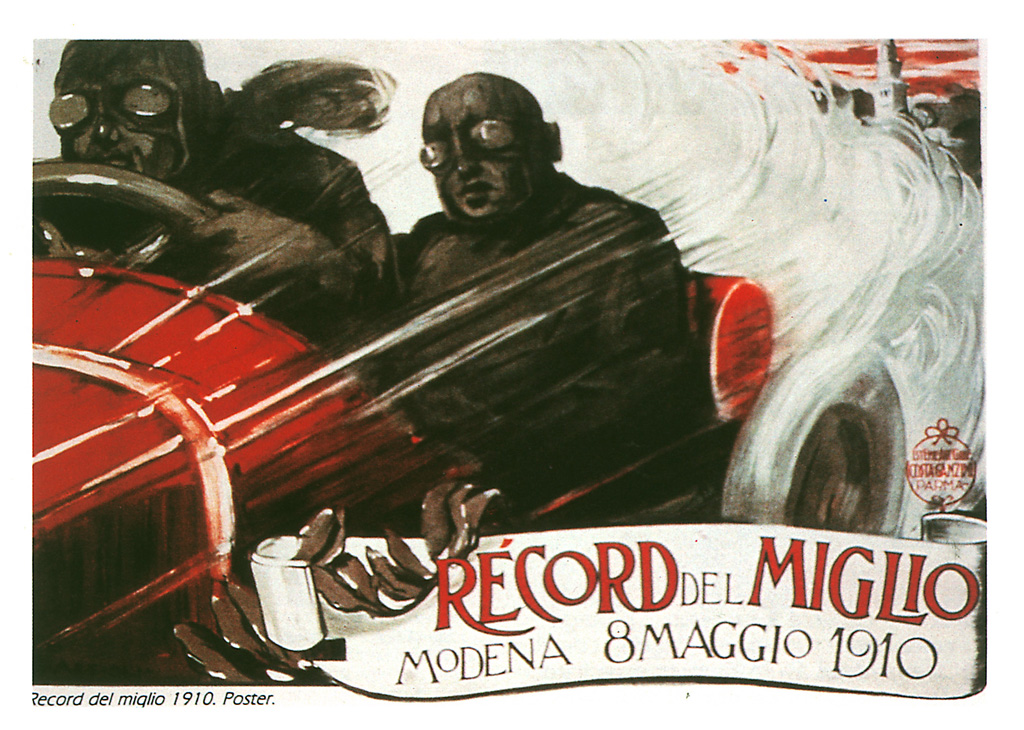
Vittorio's grandfather Celso founded an engineering company in 1879 and his father Francesco was the first one in Modena to register a car (in 1910, registration "MO 1") but, in 1879 at the same time, patriarch Celso Stanguellini began to produce and sell his patented design of timpani kettledrums in the workshop he ran in the center of the city. The Stanguellini timpani, patented and respected, brought the family to prosper. In the air, however, there was something in Emilia at the turn of the 1900s: the air of engines, of mobility. As the story goes, Celso’s son Francesco opened a bicycle shop in the center of Modena in the year zero of the new century, that twentieth century in which it was said that man would do great things. Bicycles, yes, but also motorcycles. Tricycles. Francesco had a love of early automobile racing (think tricycles with engines) and inspired the family company to shift its focus towards providing spare parts for these machines. And the first cars. The Fiat, in particular, which seemed to have that little bit extra. Coming of age at the helm of said company, Francesco also opened the first Fiat dealership in Modena in 1925. It grew quickly. Thanks to his love of speed, within a few years he went beyond replacement parts and sales and began customizing some of these otherwise typical vehicles into competition-spec cars and thus Scuderia Stanguellini was officially born. Stanguellini transformed common Fiats into lightweight racing cars. The result was something between a Ferrari and a Maserati of the period performance-wise — with some reaching speeds up to 180km/h — and, though the Fiat underpinnings were humble, Staguellini’s work epitomized the Italian creative stereotype like few others. Perhaps only in Modena, the home of Italian motorsport, one could run a business concerned with drilling holes in cars to shed weight. At Stanguellini, every component of the automobile was dieted and removing all but the most vital parts to reduce mass would cost its owner 20.000 lire for each kilogram shed. That adventure of Francesco turned into the passion of Vittorio, the son. Francesco, in fact, died rather suddenly a few years later and, in 1932, the family business passed to the hands of his son, who had concluded the musical path.
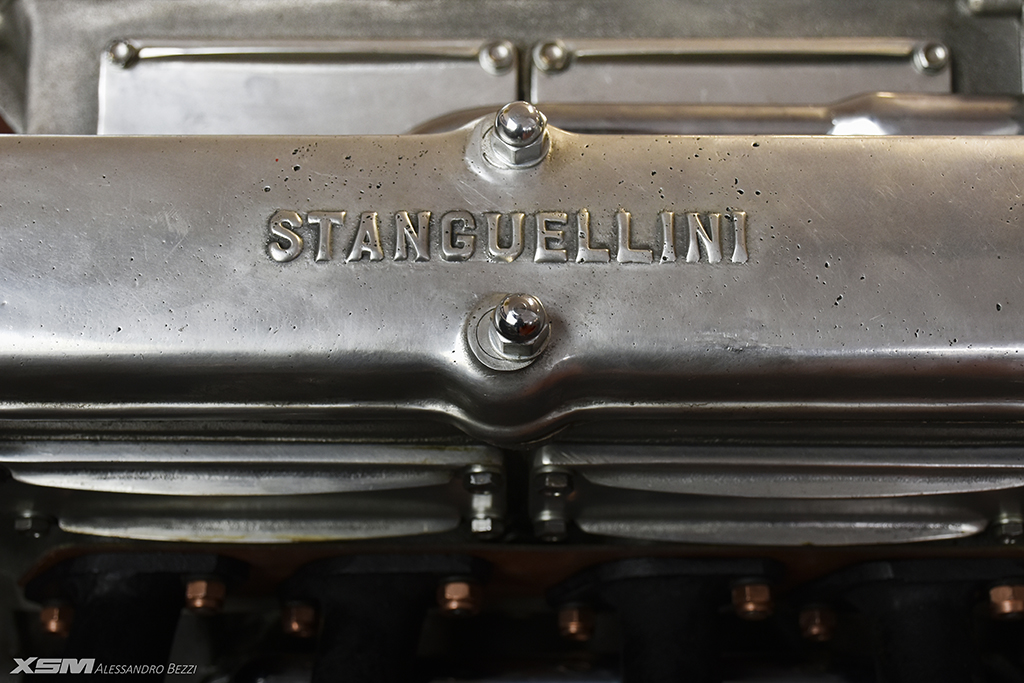
But engine sound is however art.
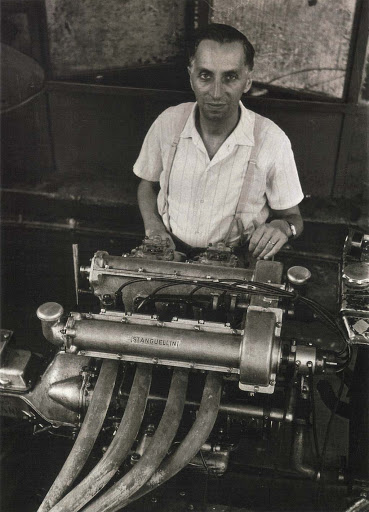
Vittorio Stanguellini, September 1950.
At just 19 years old, Vittorio had already learned a great deal about engineering performance parts and cars thanks to his father’s tuition and, in the hands of the third generation Stanguellini, the family company continued to find success. And, at the same time as Enzo Ferrari's quotations growth, in Modena the surname to follow was Stanguellini.
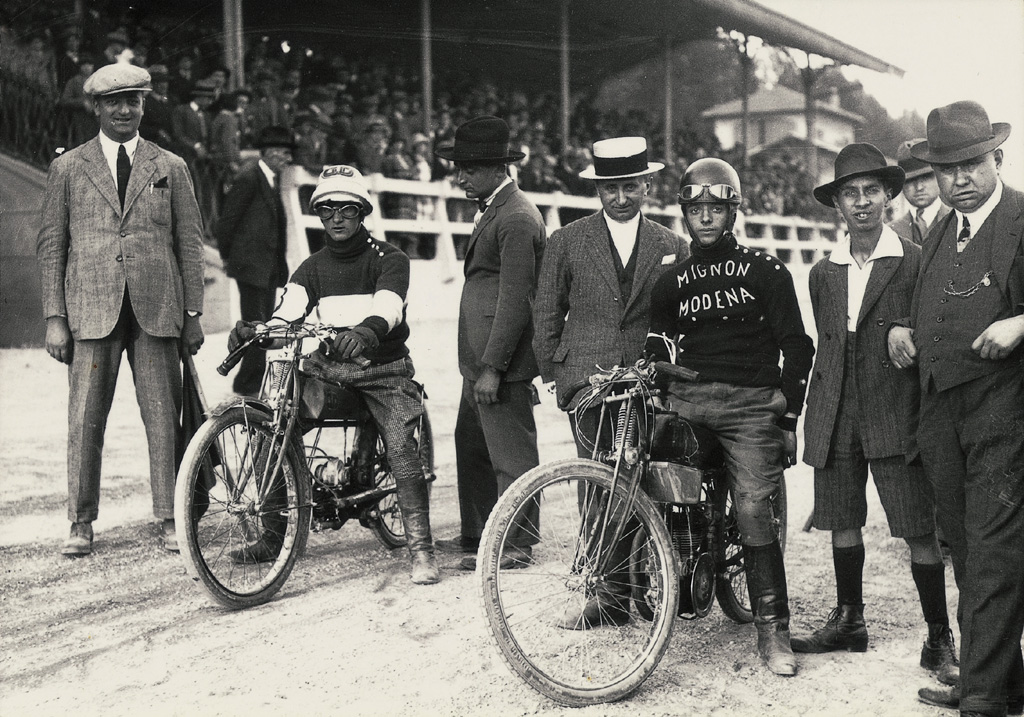
Enzo Ferrari with Vittorio and Francesco Stanguellini.
Both Enzo and Vittorio wanted to race fast and long and legend said that in the Emilian streets the challenges between the local workshops also occurred in a clandestine way: healthy mouths shut and smiles, a supply of joy before the oppressive and mournful sadness of the useless second world war.
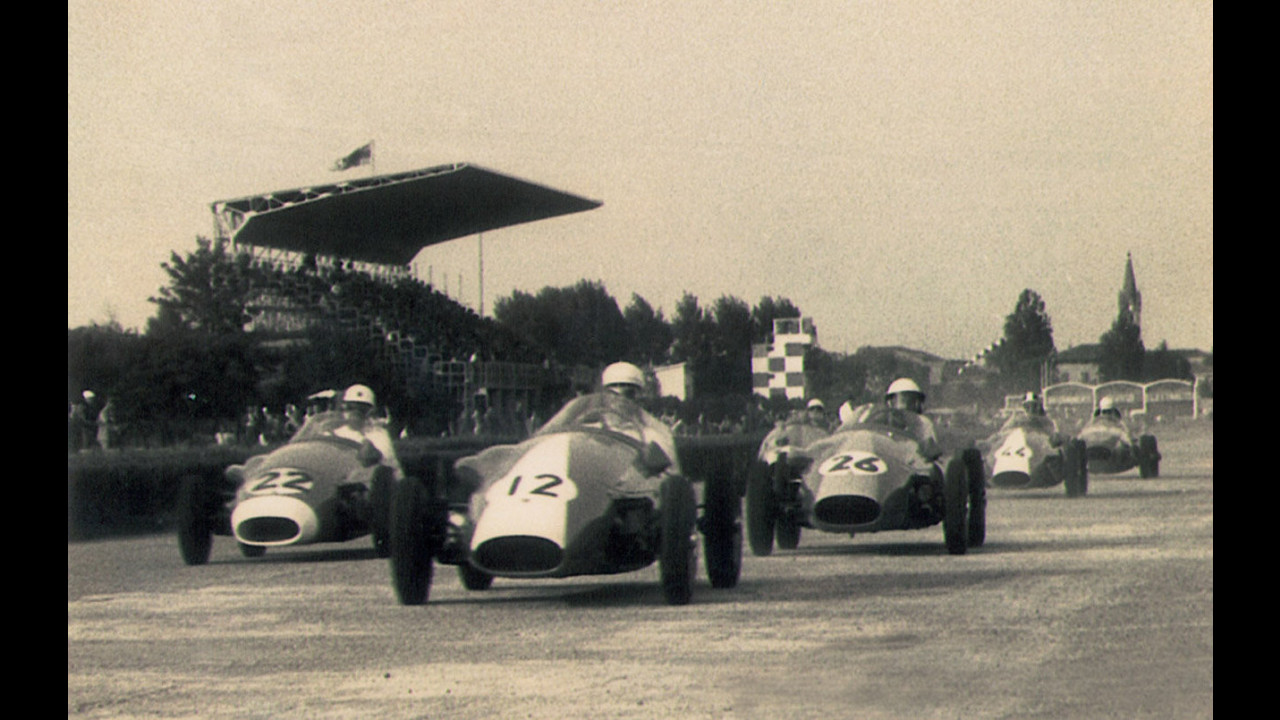
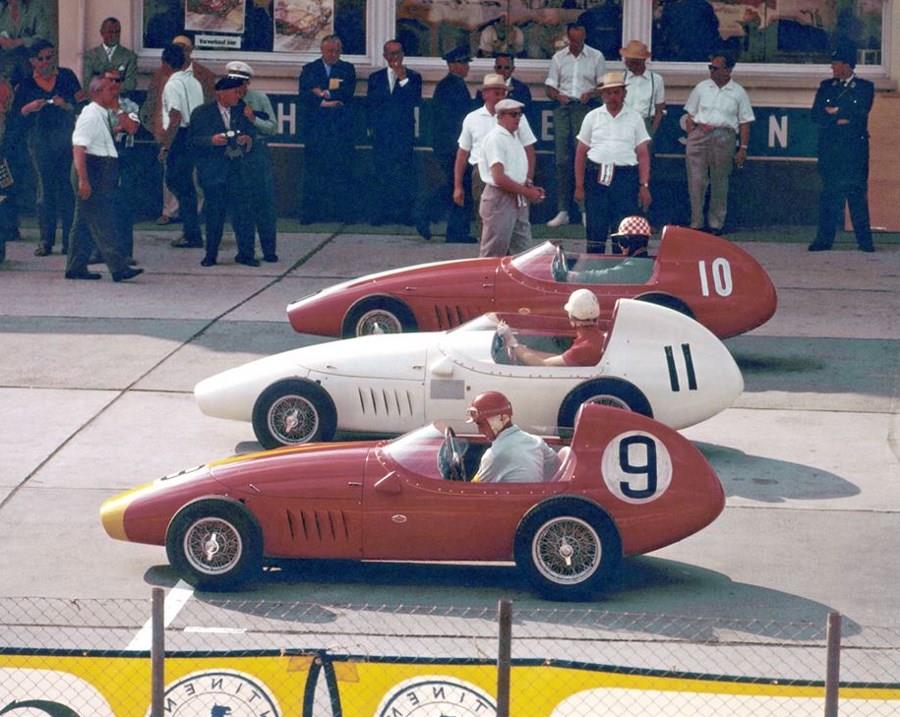
Stanguellini and Ferrari accompanied each other in good and bad times: towards the end of the thirties they got busy in racing, the first bringing to the races his modified Fiat, almost twisted to give a hard time to every opponent, since 1937; the second founding Auto Avio Costruzioni.
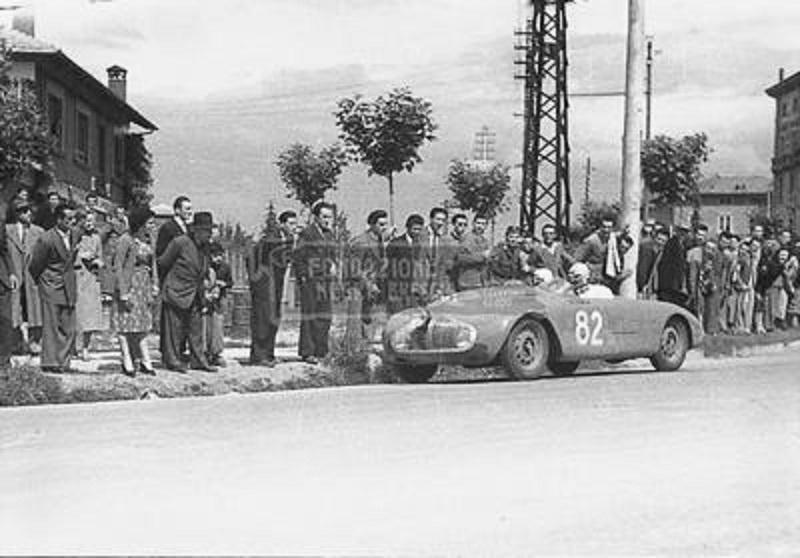
In 1937, the first Stanguellini factory racing effort, Squadra Corse Stanguellini, was set up under Vittorio’s direction to compete in the 1938 season. For drivers, Giulio Baravelli was assigned to a Fiat 500, Lotario Rangoni was put in a Fiat 508 Sport, Francesco Severi had a Maserati 1500 and Efisio Zanella in another Fiat 500. They would swap around and drive a number of Stanguellini-prepared cars, but notable results early on included Severi taking first place in the 28th Targa Florio in 1937 with a Stanguellini-modified Maserati C6M 1500.
With these upgraded Fiat and Maserati automobiles — and coming off of the excellent first attempt, first place finish in the Targa Florio — Squadra Stanguellini also saw Giulio Baravelli win his class in the 1938 Mille Miglia in heavily modified Fiat 500. The race was not held in 1939, but he won the Tobruk-Tripoli in a Stanguellini car that year and in 1940 when the Mille Miglia came back, Stanguellini-enhanced cars won the 750cc and 1100cc classes.
After the break from motorsport and World War II came to an end, Scuderia Stanguellini returned to racing (always with the trusty 750 Sport Nazionale, 28 HP at 6,000 rpm with a chassis composed of pressed steel longerons with stiffening crossbars, derived from Fiat 500 and with the 1100 Sport Nazionale), only to find a familiar opponent from the same region wearing a new official name: Scuderia Ferrari. And the rest is history. The battles between the leading drivers of the era, such as Fernando Righetti for Stanguellini and Franco Cortese for Ferrari, in Italy and abroad, created some of the most memorable racing in GP history.
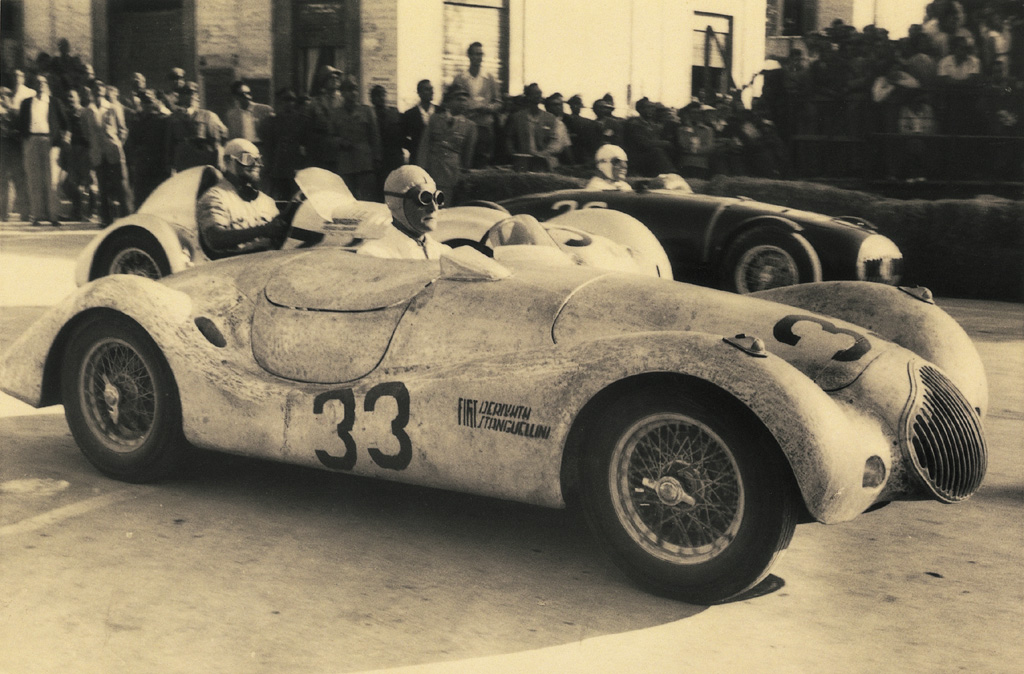
Nando Righetti and the Stanguellini 1100.
Vittorio Stanguellini specialized himself in racing carsand began by modifying firstly Fiat 1100 Sport Internazionale.
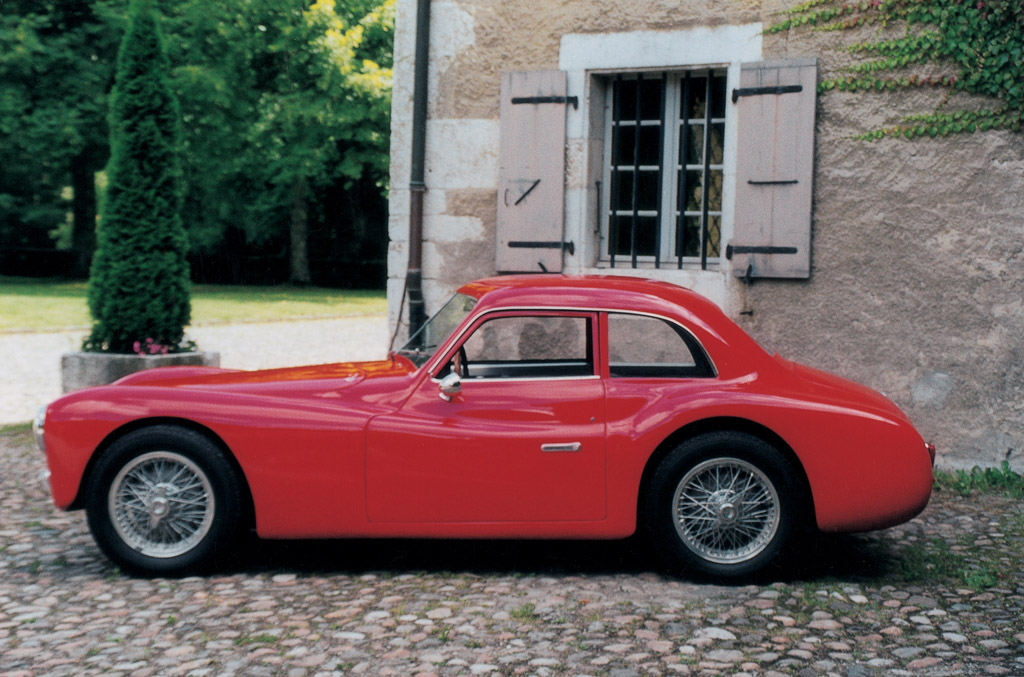
Berlinetta 1100 Stanguellini.
His 1100 was always more of his own production than of Fiat derivation and his cast iron monobloc, light alloy head, was supplied in a DOHC version for the Cooper Bobtail and for the Lotus Eleven in the years 1956-57. Then he modified 750 motors, perfecting the chassis making it lighter and stronger at the same time. He also produced his own chassis and made well-finished aerodynamic bodies. In short, respect for Modena's business grew steadily. In the late 1950s and early 1960s, Vittorio Stanguellini delivered several competitive racing cars, especially the Formula Juniors - the category in which he experienced the greatest satisfactions. As with British manufacturers, lightness was in fashion in Modena: holes, new materials and other devilries in order to reduce the weight of the car. Racing driver Ferdinando Righetti was also from Modena. Beginning his career in the 1930s in a Stanguellini Fiat, he became personal friends with both Vittorio Stanguellini and Enzo Ferrari and worked as a test driver for both marques. Responsible for most of the testing of the first official Ferrari, the 125 S, Righetti was heralded for his professionalism outside of the car and his speed and consistency inside of it. Crowds recognized him for his elegance too, dressed as he always was in white overalls and an unmissable silk scarf. The kind of guy bon vivants aspire to be and, at the very least, look like.
He came to prominence at the Modena GP of 1936, when he finished second in a beautifully prepared but outdated Maserati 4CS upgraded by Stanguellini. Moving on to become a driver for Scuderia Ferrari in sports cars, he also drove for Alfa Corse in the late 1930s and, in 1939, he won the Targa Abruzzi. In 1947 he drove for both Stanguellini and Ferrari, winning the Piacenza GP for Stanguellini before spending a year with Ferrari in 1948 only to come back to Stanguellini in 1949.
Following the consistent results of the immediate post-war era, Stanguellini’s 1100 twin-cam Fiat-based engines had proven to be durable, competitive and affordable and were in high demand. By 1950, Vittorio was producing a unit that would become legendary: a dual-overhead cam 750cc engine which would be used successfully in both single-seater and racing sports cars. Stanguellini’s engineering skills led to several other innovations and, thanks to his perseverance and his trusted collaborators, they added to their trophy case with success at races like the 1957 12 Hours of Sebring, where Herm Behm, Carl Haas and Sandy MacArthur drove a Stanguellini Sport Bialbero 750 to a class victory. They were quite good at small-capacity racing and even went a bit littler at times.
In the late 1950s, Count Giovanni “Johnny” Lurani Cernuschi had an idea for a racing series that would be less expensive than F1 and could help younger drivers prepare for the next level of racing.
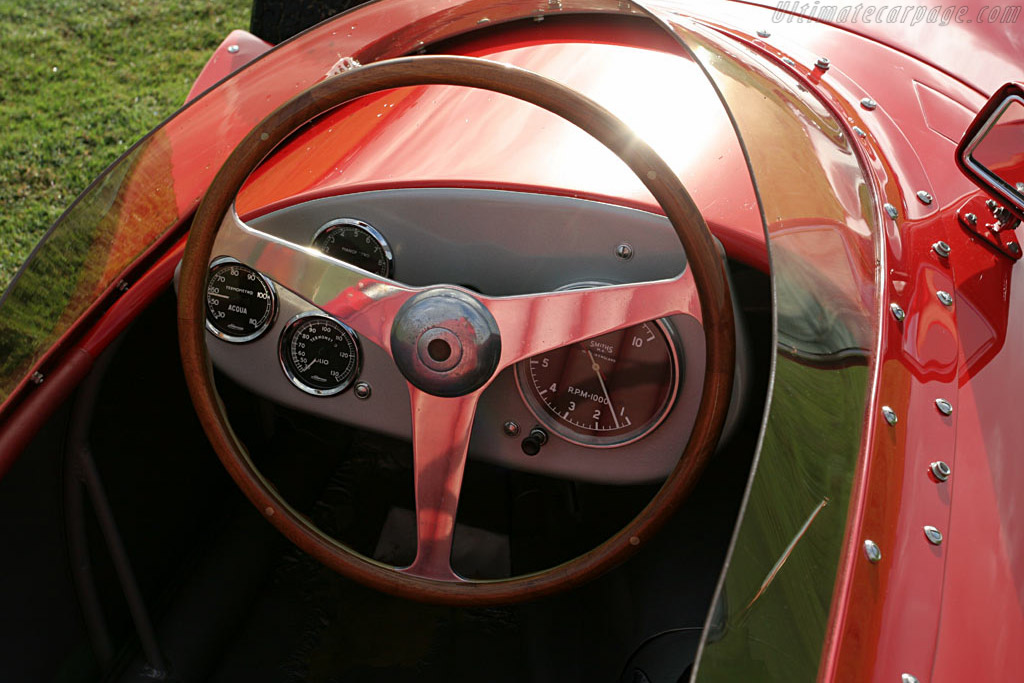
The series would be called Formula Junior and it was intended to provide an entry-level class where drivers made use of relatively inexpensive mechanical components from ordinary automobiles. In the Formula Junior Vittorio Stanguellini saw a big opportunity and, by 1958, he had selected some racers that would qualify for this new series.
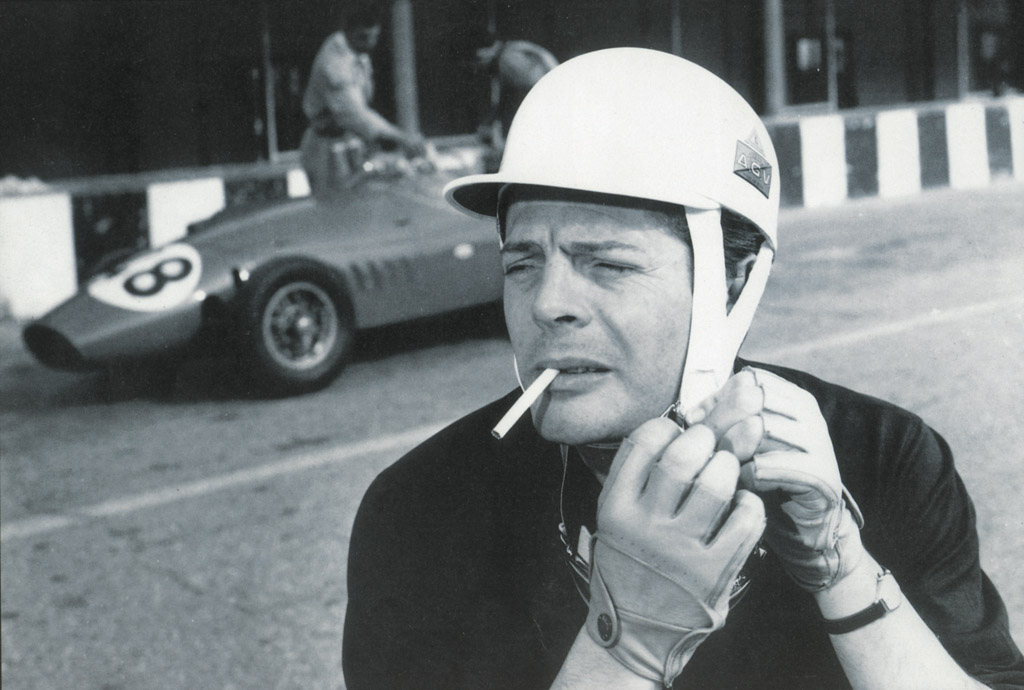
Marcello Mastroianni tests the Junior-Stanguellini in 1960.
Thanks also to the advice of Juan Manuel Fangio, who by this stage was a close family connection, they developed a car as well: the Stanguellini Junior 1100.
This little single-seater, driven by Swiss racer and engineer Michael May, won the first international Formula Junior championship in 1959 and went on to make motorsport history after that, achieving over 40 national and international victories and several championship titles.
Besides sprint, circuit and hill climb racing, speed records were another challenge that Vittorio obsessed over. In 1963, the Colibrì presided over by Vittorio and Enzo and on the banks of Monza, this was a futuristic aerodynamic car with bodywork fabricated by Franco Scaglione and with a single-cylinder Guzzi 250cc engine for power — conquered six world speed records at Monza. Back on the track, however, the well-designed chassis of the beautiful shark-nosed Junior Delfino —Stanguellini’s rear-engine single-seater for 1962 — was not enough to contend in the point because of lower power of the Italian vehicles compared to the well-known Ford Anglia engines of their rivals.
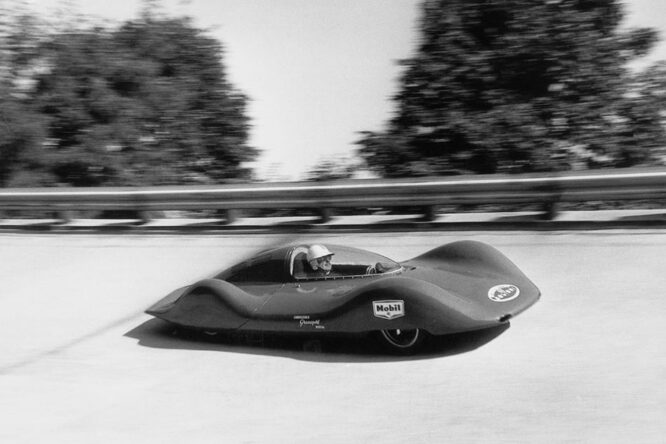
The other important car besides Colibrì to understand what Stanguellini could have become in relation to Fiat was the Berlinetta Bertone. At the time of its production, which took place from 1947 to 1954, it can be said, with the proper proportions, that Stanguellini was for Fiat what AMG is today for Mercedes: a renowned elaborator capable of providing high quality and also giving something more.
Over the years, Stanguellini went from making the chassises on his own up to heavily intervening on the engines, with the DOHC head (a trademark) and other complex interventions on Fiat units. For this reason the Modena brand, with the typical yellow and blue colours, can be defined as a manufacturer rather than a simple workshop.
The last years of Vittorio’s life were marked by a decline in his company’s results due to fierce competition from an engineering and economic standpoint. As the slow retreat of the team from official races continued, Vittorio Stanguellini died on December 4, 1981, at the age of 72. From then on, the company’s focus has solely been on its history.
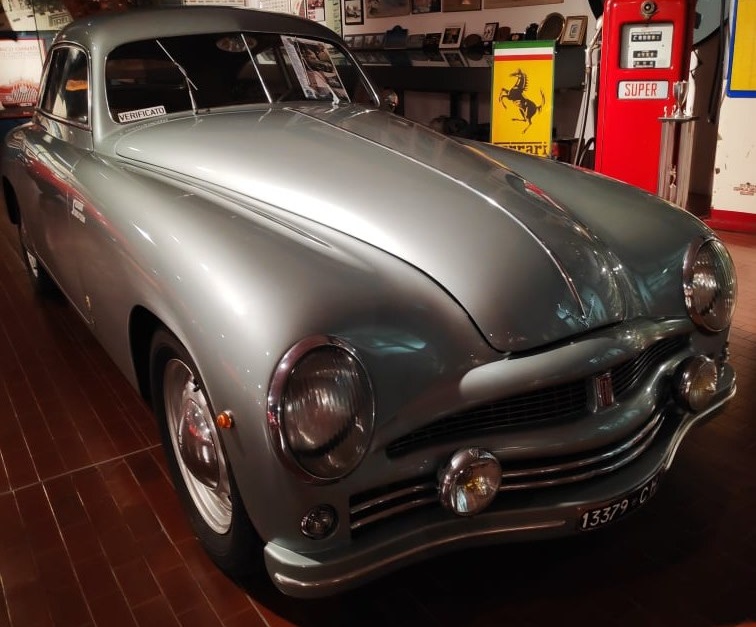
Simply modified and treated cars also remain in the history of Stanguellini, with an absolutely extraordinary value today. In 2017, at the Amelia Island auction in Florida (organized by RM Sotheby's, which we thank for the photographs), a 1957 Fiat 1200 Spider America designed by Bertone was sold at a price of 250 thousand euros.
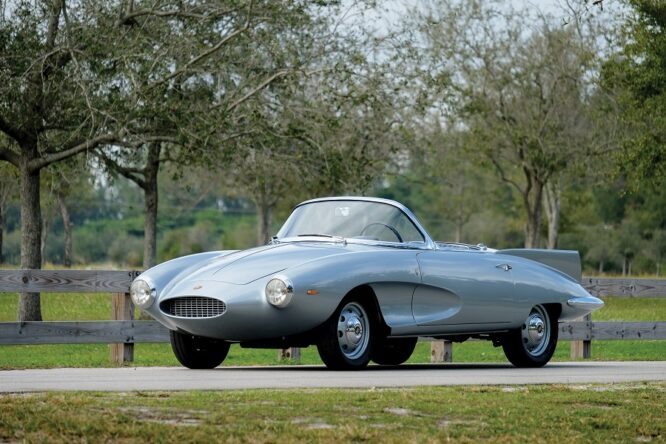
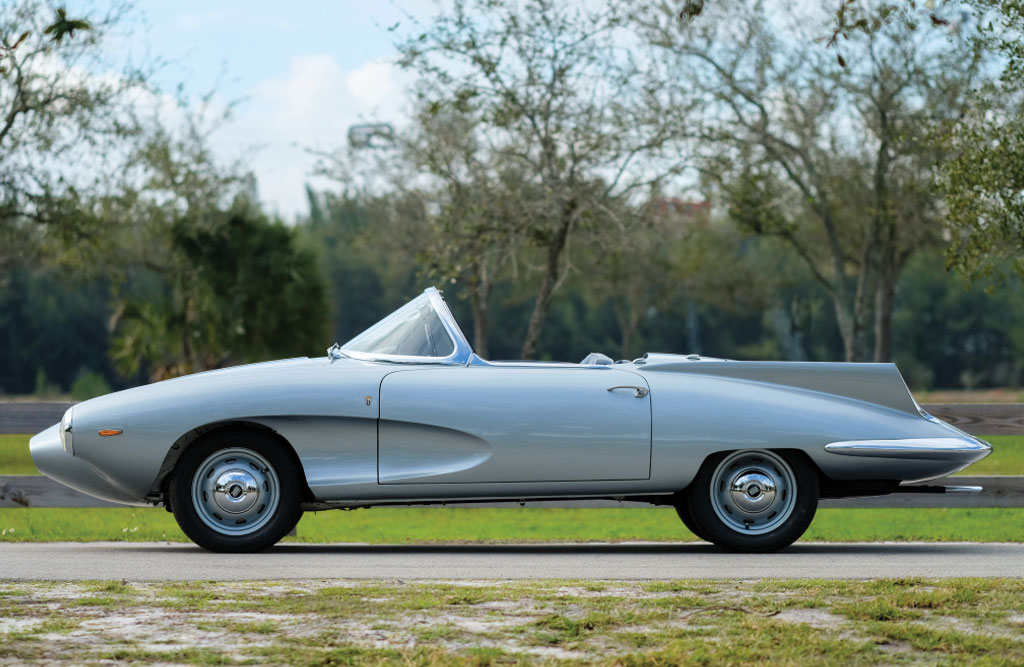
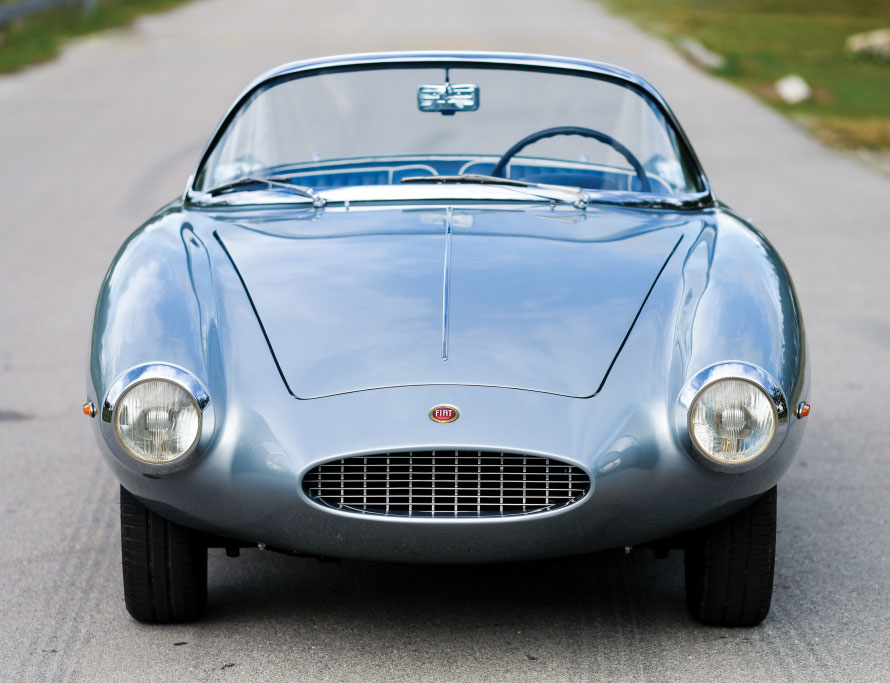
Stanguellini's last work was the collaboration for Momo Mirage, an adventure dated 1971 that involved Alfred Momo (ex Jaguar) and billionaire property developer Peter Kalikow. The car was essentially Italian in design and chassis, but with American mechanics (5.7 liter General Motors engine): the bodywork was made by Pietro Frua together with the American designer Gene Garfinkle, the chassis was entrusted to Giulio Alfieri and the monocoque was produced by Stanguellini.
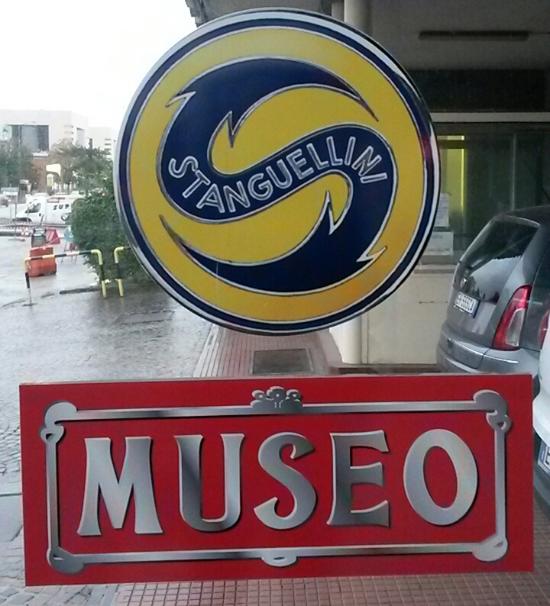
In addition to following the life (between spare parts and consultancy) of the cars that currently line the streets of vintage racing and elegance competitions, today the Stanguellini brand lives in the management of the collection of cars and finds of the Stanguellini Historic Car Museum, a shrine to the automobile, located in Via Emilia Est, in the very center of Modena.
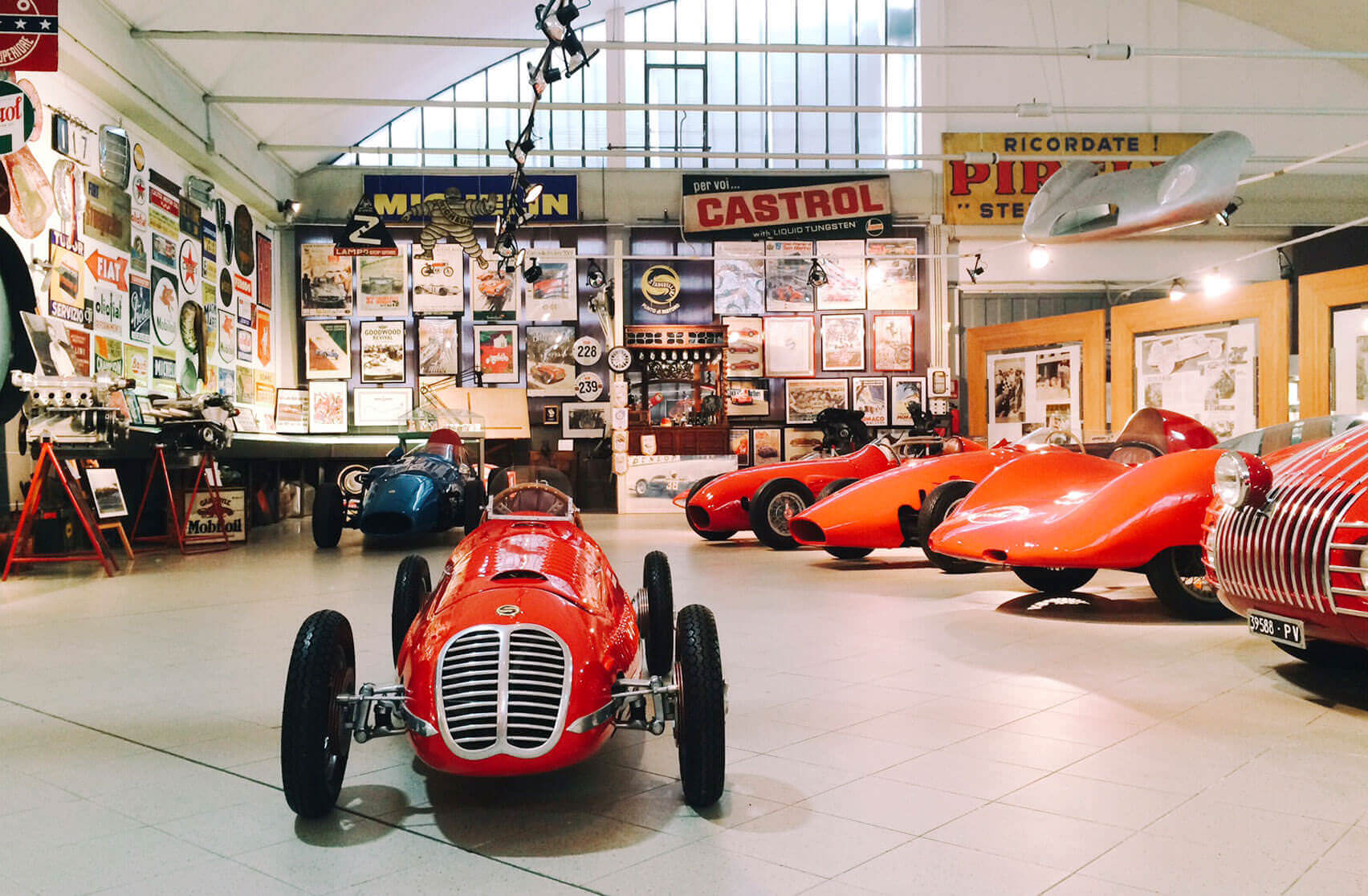
The museum, created by Vittorio’s son Francesco, opened for the first time in 1996 and has recently reopened following a renovation.
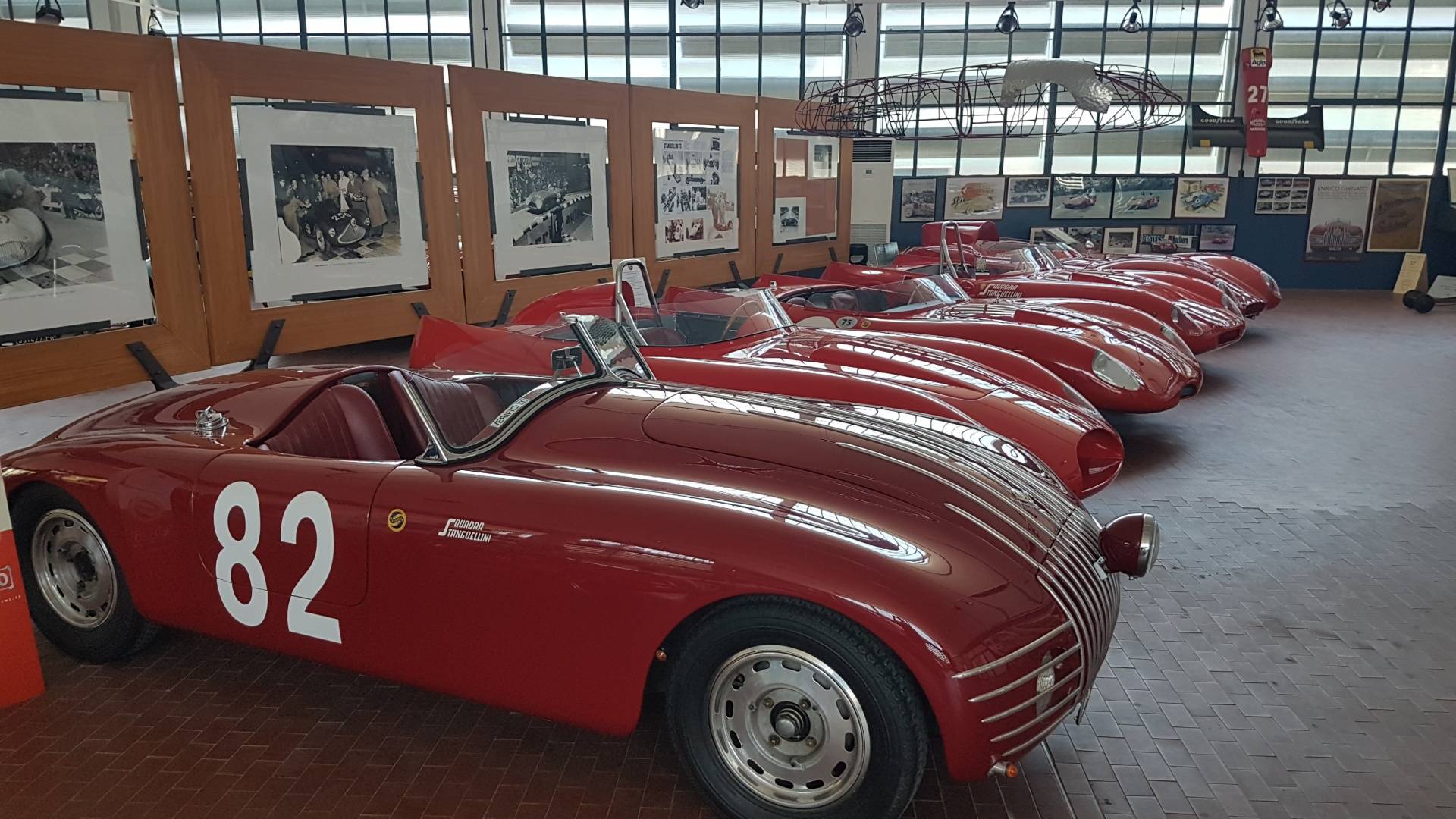
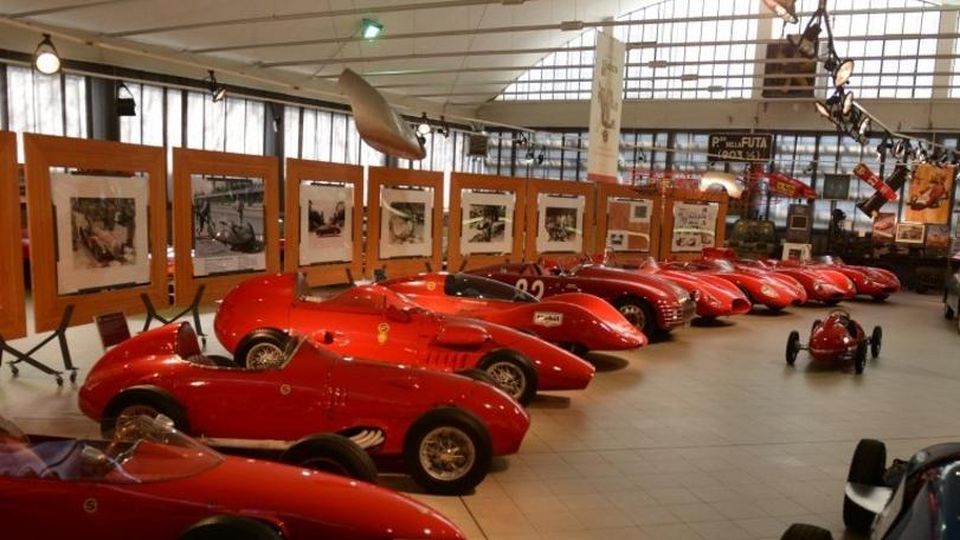
Inside you will find many of Stanguellini’s masterpieces and, with the collection peppered by other cars and automobilia from the family’s personal stash, there’s a sense of Italian performance car provenance on a general level too.
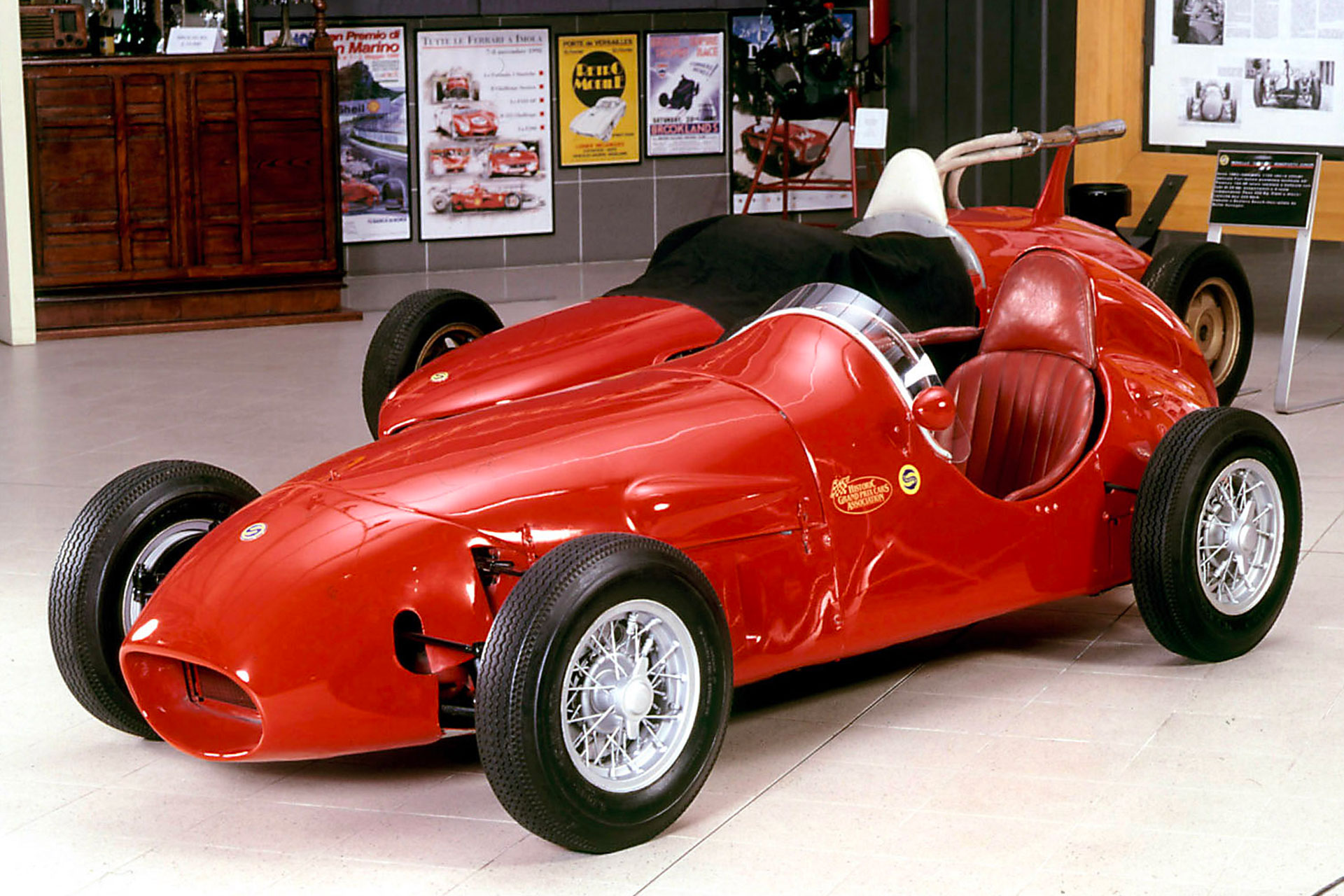
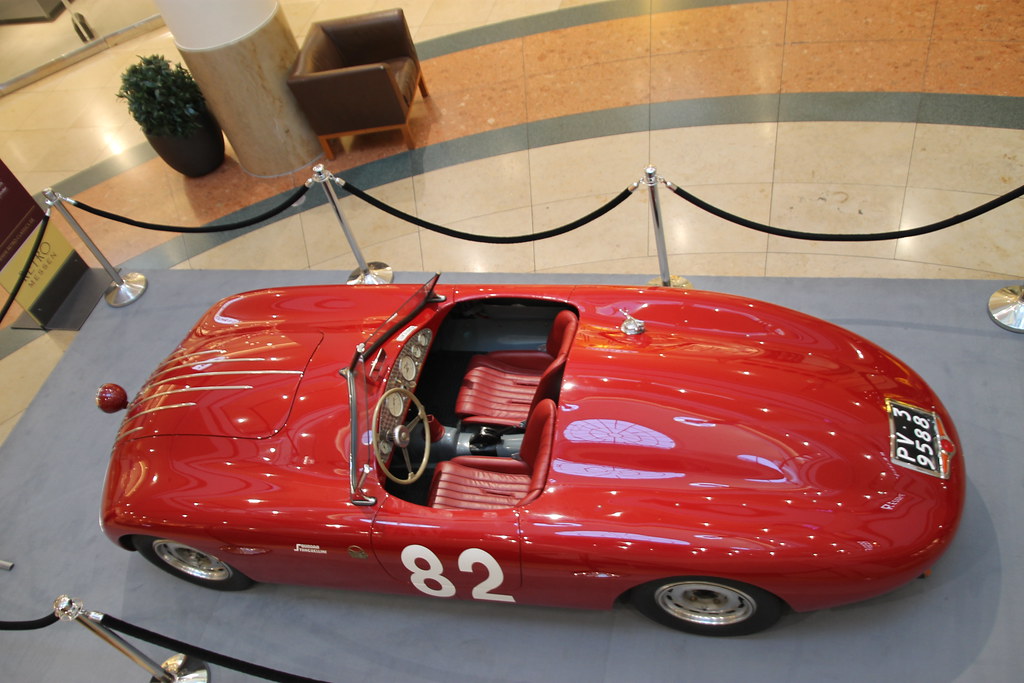
Included in the group is, as well as rich collection of photographs accessories, advertisements, historical magazines and some motors, the first sport editions that Stanguellini built from Fiats around modified 750cc and 1100cc motors,
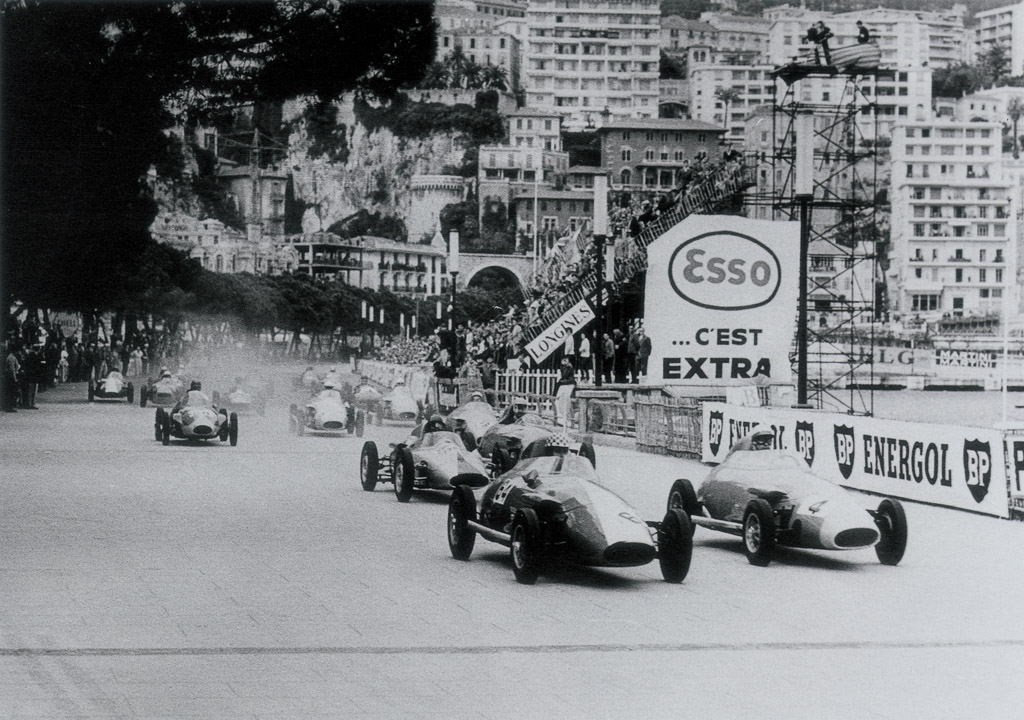
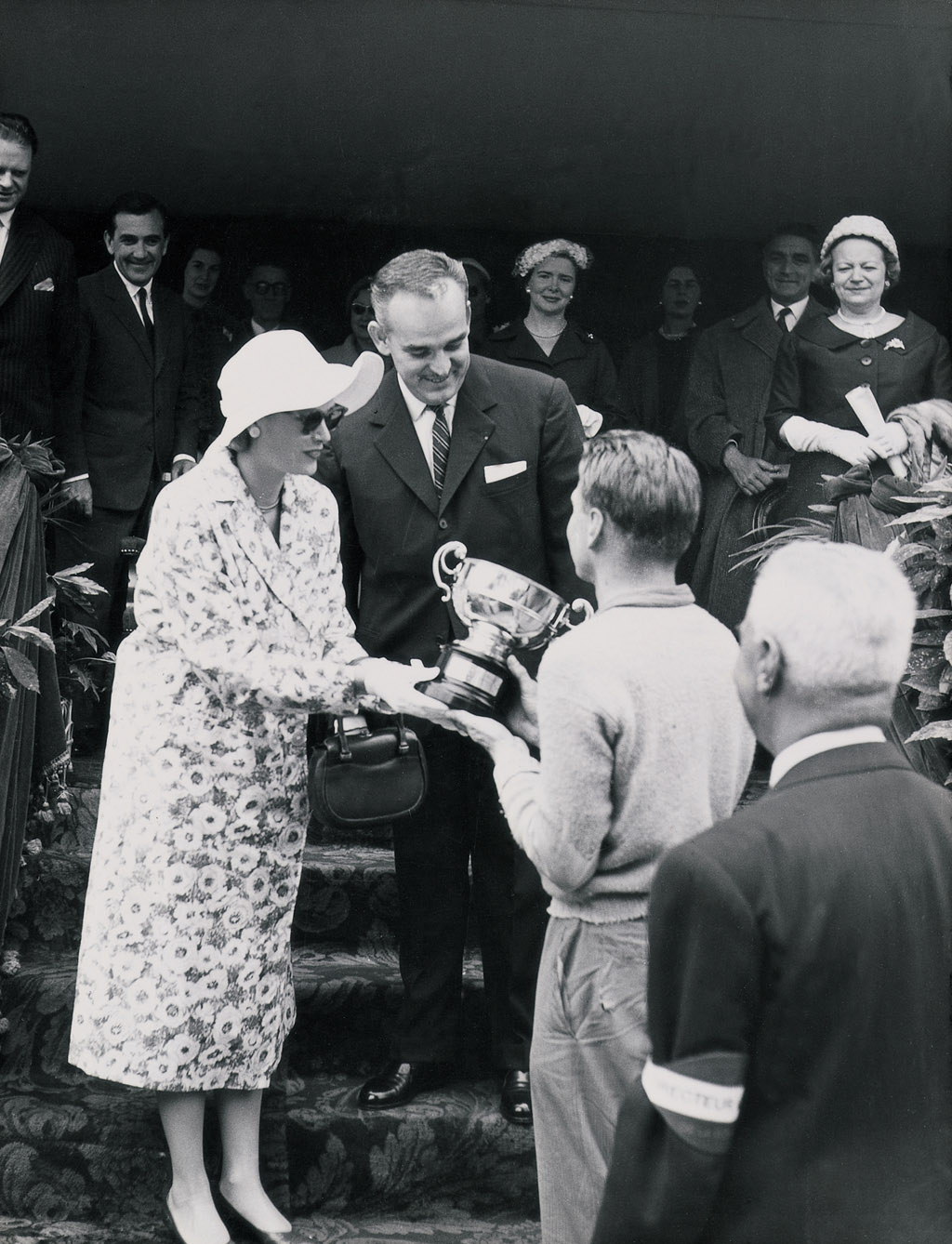
The Formula Junior that won at the 1959 Monte Carlo GP,
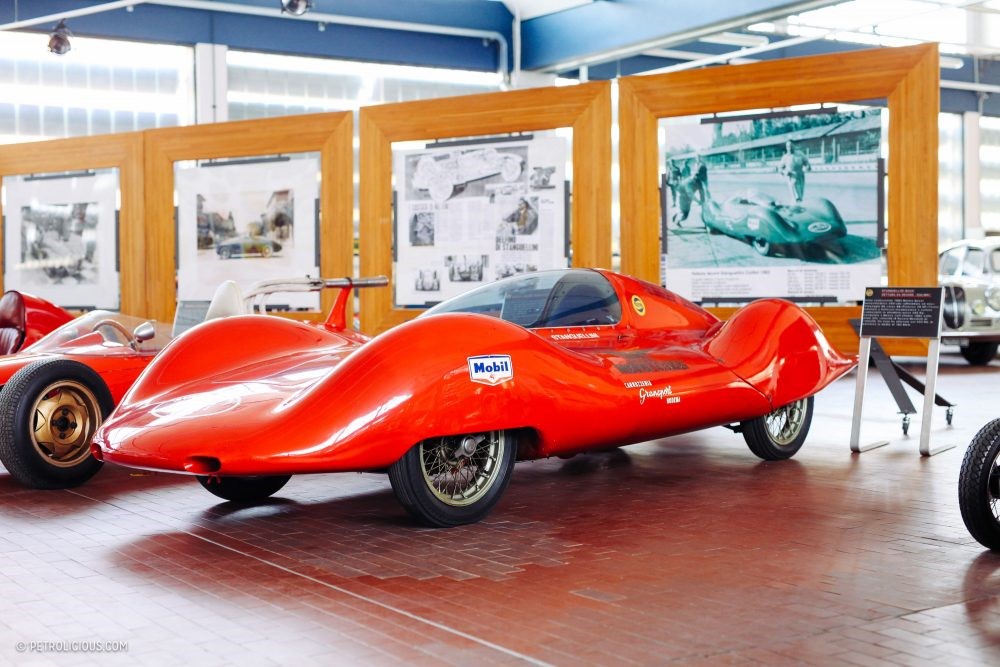
Photo Colibrì, by Petrolicius.
the speed record-breaking Colibrì, the Formula 3 cars, just about all of it is in here. In addition to a collection of engines on their own, the Stanguellini family’s eclectic assortment includes further inspiration outside of the Stanguellini efforts, with beautiful cars from Maserati, Ferrari, Porsche, Fiat, Alfa Romeo, Lancia, Jaguar, Mercedes-Benz and more.
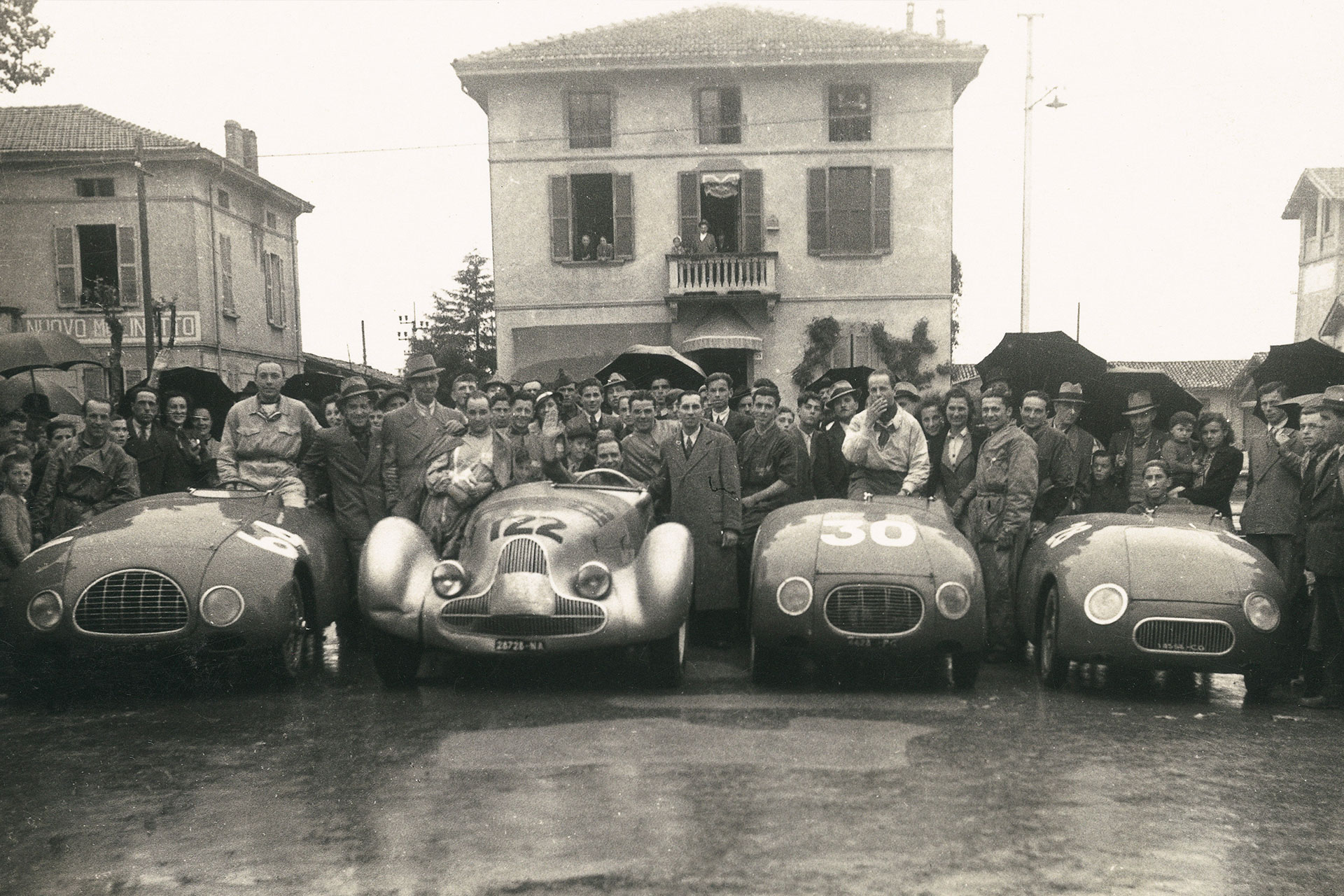
Photo exhibited at the museum.
What can a vintage car museum teach us? To love things in general not just motorcars, it preserves a nation’s traditions!
Videos
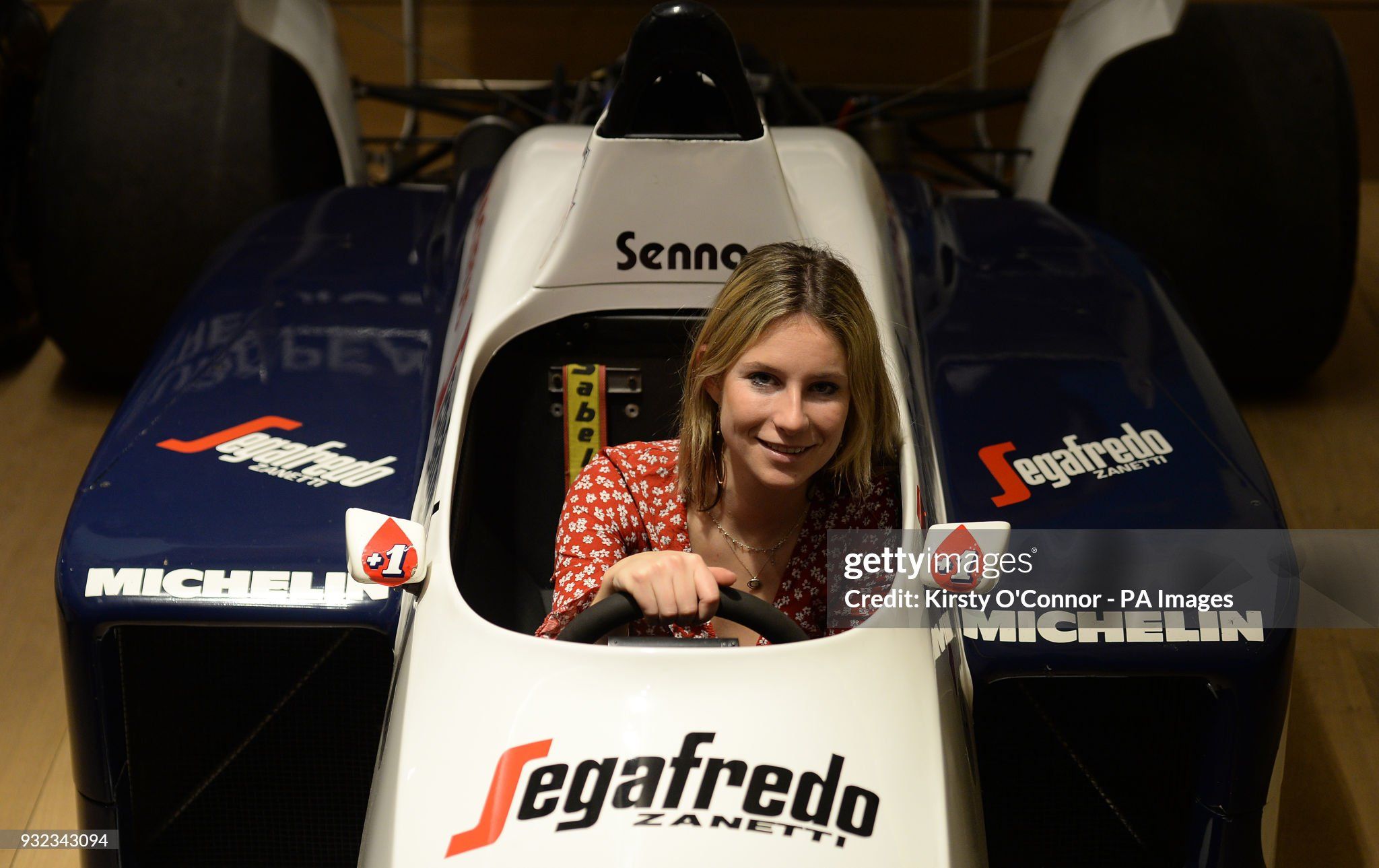
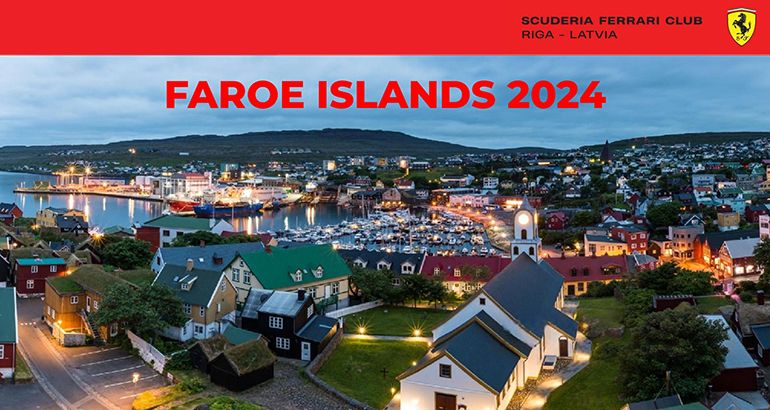
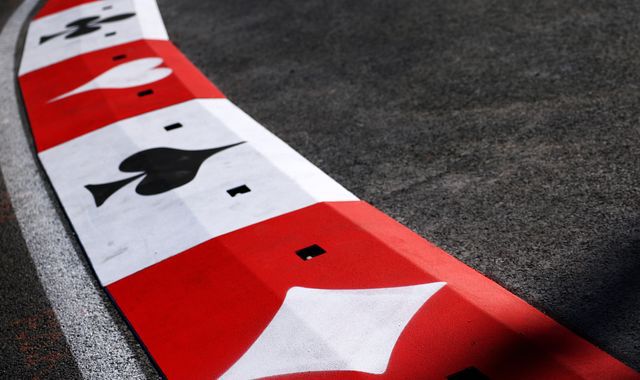
Comments
Authorize to comment